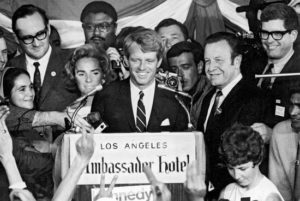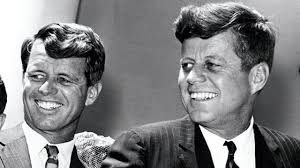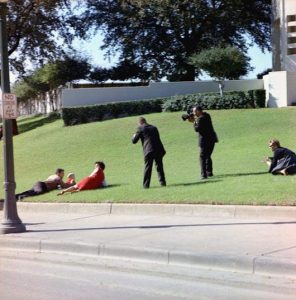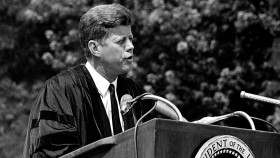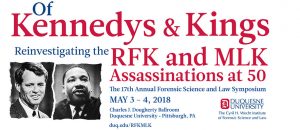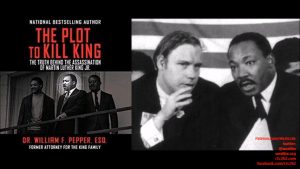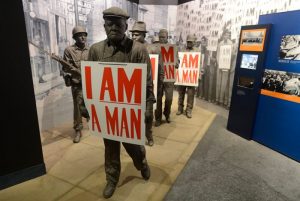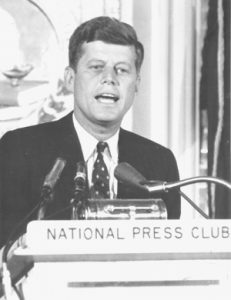Editor’s Choice: News & Views from January-June 2018
This archive of assassination-related news and commentary for the calendar year 2018 is a joint project between CAPA and the Justice Integrity Project. The material below consists of selected excerpts from significant news stories or commentaries  regarding alleged political assassinations or attempts. The materials are arranged in reverse chronological order and focus primarily upon news arising from the 1960s murders of President John F. Kennedy (shown in a file photo), his brother Robert Kennedy, and the Rev. Martin Luther King, Jr. Included also are several reports regarding other alleged political murders of prominent international leaders, or attempts.
regarding alleged political assassinations or attempts. The materials are arranged in reverse chronological order and focus primarily upon news arising from the 1960s murders of President John F. Kennedy (shown in a file photo), his brother Robert Kennedy, and the Rev. Martin Luther King, Jr. Included also are several reports regarding other alleged political murders of prominent international leaders, or attempts.
CAPA welcomes your submission of additional items or any comments (including corrections) of items listed below. It is requested that new items be submitted in the format below: Publication name, headline with hotlink to URL, author, date, and brief excerpt. Correspondence should be sent to this site’s editors, Glenda De Vaney or Andrew Kreig, via email.
June
Mary Ferrell Foundation, JFK Documents released on April 26, 2018, Rex Bradford, June 29, 2018. These documents were released on April 26, 2018, pursuant to a review of documents originally scheduled for final release in October 2017 under the JFK Records Act. The documents are listed on the Mary Ferrell site.
For those interested in using the Mary Ferrell site for these docs, the migration project has picked up the pace. This folder and its subfolders holds almost all of the 19,000 documents in the April 26 release. What is missing is a few hundred FBI files where NARA released blocks of records in single large PDF files, and I haven’t yet figured out where the dividing lines are (would like to upload each record with just its pages):
DIA (Defense Intelligence Agency) documents released on April 26, 2018
Dept. of State documents released on April 26, 2018
FBI documents released on April 26, 2018
NSA (National Security Agency) documents released on April 26, 2018
Church Committee (SSCIA) documents released on April 26, 2018
USIA (United States Information Agency) documents released on April 26, 2018
NARA-held White House related documents released on April 26, 2018
LBJ Library documents released on April 26, 2018
Rockefeller Commission documents released on April 26, 2018
NARA documents related to Warren Commission released on April 26, 2018
HSCA (House Select Committee on Assassinations) documents released on April 26, 2018
INSCOM/CSF documents released on April 26, 2018
OSD (Office of Secy. of Defense) documents released on April 26, 2018
USA (Pentagon HQ) documents released on April 26, 2018
Army documents released on April 26, 2018
JCS (Joint Chiefs of Staff) documents released on April 26, 2018
Unz Review, Update On ‘American Pravda’ Series, Ron Unz, June 29, 2018. Demonstrating that the passage of more than a half-century has not entirely dimmed interest in the issue, ranking first in readership this last week were the two parts of my analysis of the 1963 JFK Assassination, the first even being a hold-over from the previous week.
In Part I, I summarized some of the very considerable body of evidence that the Warren Commission verdict of a “lone gun” was very likely incorrect, and that a conspiracy of some sort therefore claimed the life of our President, noting that in research years even such impeccably respectable publications as The New York Times seem to have admitted exactly that conclusion.
Given the high likelihood of such a conspiracy, my much longer Part I discussed the possible range of central organizers, concluding that although it is impossible to come to any firm conclusion, the two most likely suspects, especially based on the factor of motive, would be Vice President Lyndon Johnson and the Israeli Mossad. Unsurprisingly this controversial topic provoked a very spirited debate, disputing all aspects of the issue, with comments on the two articles already totaling nearly 200,000 words and still going strong.
Unz Review, American Pravda: The JFK Assassination, Part I – What Happened? Ron Unz, June 18, 2018. Among other things, occasional references reminded me that I’d previously seen my newspapers discuss a couple of newly released JFK books in rather respectful terms, which had surprised me a bit at the time. One of them, still generating discussion, was JFK and the Unspeakable published in 2008 by James W. Douglass, whose name meant nothing to me. And the other, which I hadn’t originally realized trafficked in any assassination conspiracies, was David Talbot’s 2007 Brothers: The Hidden History of the Kennedy Years, focused on the relationship between John F. Kennedy and his younger brother Robert. Talbot’s name was also somewhat familiar to me as the founder of Salon.com and a well-regarded if liberal-leaning journalist.
None of us have expertise in all areas, so sensible people must regularly delegate their judgment to credible third-parties, relying upon others to distinguish sense from nonsense. Since my knowledge of the JFK assassination was nil, I decided that two recent books attracting newspaper coverage might be a good place to start. So perhaps a couple of years after watching that Oliver Stone film, I cleared some time in my schedule, and spent a few days carefully reading the combined thousand pages of text.
I was stunned at what I immediately discovered. Not only was the evidence of a “conspiracy” absolutely overwhelming, but whereas I’d always assumed that only kooks doubted the official story, I instead discovered that a long list of the most powerful people near the top of the American government and in the best position to know had been privately convinced of such a “conspiracy,” in many cases from almost the very beginning.
American Pravda: The JFK Assassination, Part II – Who Did It? Ron Unz, June 25, 2018. A strong dam may hold back an immense quantity of water, but once it breaks the resulting flood may sweep aside everything in its path. I had spent nearly my entire life never doubting that a lone gunman named Lee Harvey Oswald killed President John F. Kennedy nor that a different lone gunman took the life of his younger brother Robert a few years later. Once I came to accept that these were merely fairy tales widely disbelieved by many of the same political elites who publicly maintained them, I began considering other aspects of this important history, the most obvious being who was behind the conspiracy and what were their motives.
The Kennedy assassination surely ranks as one of the most dramatic and heavily reported events of the twentieth century, yet the overwhelming evidence that our president died at the hands of a conspiracy rather than an eccentric “lone gunman” was almost entirely suppressed by our mainstream media during the decades that followed, with endless ridicule and opprobrium heaped on many of the stubborn truth-tellers. Indeed, the very term “conspiracy theory” soon became a standard slur aimed against all those who sharply questioned establishmentarian narratives, and there is strong evidence that such pejorative use was deliberately promoted by government agencies concerned that so much of the American citizenry was growing skeptical of the implausible cover story presented by the Warren Commission. But despite all these efforts, the period may mark the inflection point at which public trust in our national media began its precipitous decline. Once an individual concludes that the media lied about something as monumental as the JFK assassination, he naturally begins to wonder what other lies may be out there.
Although I now consider the case for an assassination conspiracy overwhelming, I think that the passage of so many decades has removed any real hope of reaching a firm conclusion about the identities of the main organizers or their motives. Those who disagree with this negative assessment are free to continue sifting the enormous mountain of complex historical evidence and debating their conclusions with others having similar interests.
June 26
![]() WhoWhatWhy, The Brilliant Black Woman Who Defended the Accused Killer of JFK’s Mistress, Part 2, Peter Janney, June 26, 2018. Dovey Roundtree was facing tough pressure defending her client, who was accused of murdering the mistress of JFK. Everyone wanted a guilty plea, but Roundtree had done her homework, and once the trial began she started exposing holes in the prosecution’s “case-closed” narrative.
WhoWhatWhy, The Brilliant Black Woman Who Defended the Accused Killer of JFK’s Mistress, Part 2, Peter Janney, June 26, 2018. Dovey Roundtree was facing tough pressure defending her client, who was accused of murdering the mistress of JFK. Everyone wanted a guilty plea, but Roundtree had done her homework, and once the trial began she started exposing holes in the prosecution’s “case-closed” narrative.
June 6
Consortium News, OAS Facing Call for New Probe into RFK Murder, Dr. William Pepper and Andrew Kreig, June 6, 2018. Robert Kennedy was shot on June 5 and died June 6, 1968, fifty years ago today. A new examination of evidence is forcing human rights organizations — including the OAS — to consider probing the case.
Recent news about Robert F. Kennedy’s fatal shooting sharpens the challenge for human rights organizations in how to address the shocking justice issues raised by the continued imprisonment of RFK’s convicted slayer Sirhan Sirhan. Here is a link to the filing last summer by Sirhan’s attorney, Dr. William F. Pepper.
 Washington Post, The Bobby Kennedy assassination tape: Were 13 shots fired or only 8? Tom Jackman (right), June 6, 2018. For years after the assassination of Robert F. Kennedy in June 1968, analysis of the case focused on the ballistics evidence and varying witness accounts of what happened in the pantry of the Ambassador Hotel in Los Angeles. But in 2004, delving through the archives of the police case file, CNN senior writer Brad Johnson found a recording that had been ignored for decades.
Washington Post, The Bobby Kennedy assassination tape: Were 13 shots fired or only 8? Tom Jackman (right), June 6, 2018. For years after the assassination of Robert F. Kennedy in June 1968, analysis of the case focused on the ballistics evidence and varying witness accounts of what happened in the pantry of the Ambassador Hotel in Los Angeles. But in 2004, delving through the archives of the police case file, CNN senior writer Brad Johnson found a recording that had been ignored for decades.
It was a tape inadvertently made by Polish journalist Stanislaw Pruszynski, who had recorded Kennedy’s victory speech with a cassette recorder. Kennedy then left the stage and walked through the pantry while Pruszynski detached his microphone from the podium, video of the event shows. As Pruszynski then moved toward the pantry, his tape was rolling. When Johnson listened 36 years later, he thought he heard shots, then a scream.
No other recording of the shooting had ever been discovered. No cameras were rolling as Kennedy shook hands with bus boys in the pantry, followed by gunfire described by many witnesses as two shots, a pause, and then a rapid-fire sequence of shots. Johnson turned the tape over to audio engineer Philip Van Praag. Using modern technology to limit ambient noise and slow down the tape, Van Praag counted 13 shot “impulses,” or wave forms resembling gunshots, and possibly more drowned out by screams.
National Enquirer, RFK Junion Confronts Dad’s Killer, Sharon Churcher, June 18, 2018 (Print purchase required; sales begin June 6). Face To face after 49 years.
Gary Null Show, An investigation into the assassination of Robert Kennedy, the case of Sirhan Sirhan, and CIA’s MK Ultra mind control operations. Gary Null interviews Dr. William Pepper and Rick Allen, June 6, 2018
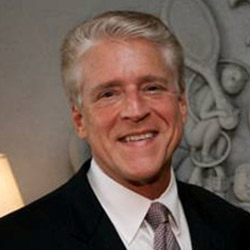 Richard “Rick” Allen, right, is the current founding CEO of Snag Films — and independent film and TV show distributor — and View Lift, a leading digital marketing platform. He has been a producer for feature documentary films, including “Lost for Life” and “A Fighting Chance” and was the President and CEO for Sporting News, and the President and CEO for National Geographic Ventures. He also served as a Deputing Assistant during Bill Clinton’s first term and was the Deputy Director of Clinton’s AmeriCorps and Senior programs. A life-long admirer and scholar of Robert F. Kennedy’s life, letters and speeches, he is the co-author/editor with the late Pulitzer Prize author Edwin Guthman, who served as RFK’s press secretary at the Department of Justice, of the recent “RFK: His Words for Our Times” — released for the 50th anniversary of Robert Kennedy’s assassination. Their earlier “RFK Collected Speeches” has become a standard reference volume for activists and historians for RFK’s position on civil rights, social justice, war poverty and creating a culture of peace. Rick received his law degree from the University of Chicago, and is a graduate of Dartmouth College. His website is RFKSpeeches.com.
Richard “Rick” Allen, right, is the current founding CEO of Snag Films — and independent film and TV show distributor — and View Lift, a leading digital marketing platform. He has been a producer for feature documentary films, including “Lost for Life” and “A Fighting Chance” and was the President and CEO for Sporting News, and the President and CEO for National Geographic Ventures. He also served as a Deputing Assistant during Bill Clinton’s first term and was the Deputy Director of Clinton’s AmeriCorps and Senior programs. A life-long admirer and scholar of Robert F. Kennedy’s life, letters and speeches, he is the co-author/editor with the late Pulitzer Prize author Edwin Guthman, who served as RFK’s press secretary at the Department of Justice, of the recent “RFK: His Words for Our Times” — released for the 50th anniversary of Robert Kennedy’s assassination. Their earlier “RFK Collected Speeches” has become a standard reference volume for activists and historians for RFK’s position on civil rights, social justice, war poverty and creating a culture of peace. Rick received his law degree from the University of Chicago, and is a graduate of Dartmouth College. His website is RFKSpeeches.com.
 William (Bill) Pepper, right, is an international civil and human rights attorney based in New York best best known for representing Martin Luther King’s accused assassin, James Earl Ray. In 1967, Dr. King had reached out to Dr. Pepper regarding an essay he had written for Ramparts magazine concerning Vietnamese victims of American napalm missions. He was present at Dr. King’s famous Riverside Church speech. William was the citizens chairman for Robert Kennedy’s run for the Senate in Westchester Country and also a counsel for Robert Kennedy’s assassin Sirhan Sirhan arguing for a second shooter, a trial he is now trying to reopen in an international court. William has received undergraduate and graduate degrees from Columbia, a doctorate in education from the University of Massachusetts, a Juris Doctoral degree from Boston College and also studied at the London School of Ecoomics and Political Science. His most recent book — The Plot to Kill King: The Truth Behind the Assassination of Martin Luther King Jr published by Sky Horse Publishing — is the result of 39 years of research and gathering of documentation and sworn testimonies on new confirmed information that will revise the history behind the assassination of Dr. King.
William (Bill) Pepper, right, is an international civil and human rights attorney based in New York best best known for representing Martin Luther King’s accused assassin, James Earl Ray. In 1967, Dr. King had reached out to Dr. Pepper regarding an essay he had written for Ramparts magazine concerning Vietnamese victims of American napalm missions. He was present at Dr. King’s famous Riverside Church speech. William was the citizens chairman for Robert Kennedy’s run for the Senate in Westchester Country and also a counsel for Robert Kennedy’s assassin Sirhan Sirhan arguing for a second shooter, a trial he is now trying to reopen in an international court. William has received undergraduate and graduate degrees from Columbia, a doctorate in education from the University of Massachusetts, a Juris Doctoral degree from Boston College and also studied at the London School of Ecoomics and Political Science. His most recent book — The Plot to Kill King: The Truth Behind the Assassination of Martin Luther King Jr published by Sky Horse Publishing — is the result of 39 years of research and gathering of documentation and sworn testimonies on new confirmed information that will revise the history behind the assassination of Dr. King.
June 5
 WhoWhatWhy, Opinion & Analysis: Was Sirhan Hypnotically Programmed to Assassinate RFK? Shane O’Sullivan, June 5, 2018. Dr. Shane O’Sullivan, shown at right, is the author of the book “Who Killed Bobby?” and the director of the documentary “RFK Must Die.”
WhoWhatWhy, Opinion & Analysis: Was Sirhan Hypnotically Programmed to Assassinate RFK? Shane O’Sullivan, June 5, 2018. Dr. Shane O’Sullivan, shown at right, is the author of the book “Who Killed Bobby?” and the director of the documentary “RFK Must Die.”
Fifty years ago, Bobby Kennedy was assassinated in the kitchen pantry of the Ambassador Hotel in Los Angeles. His convicted assassin, Sirhan Sirhan, remains in prison in San Diego and claims to have no memory of the crime.
Robert Kennedy Jr. visited Sirhan for three hours last December and, on the basis of new audio evidence of a second shooter, is calling for a new investigation into the case.
Over the last 11 years, Sirhan’s attorney Laurie Dusek and Dr. Daniel Brown (shown at left), a leading expert on hypnosis and coercive persuasion at Harvard Medical School, have spent over 150 hours with Sirhan, working pro bono and at great personal cost to recover his memory of the shooting.
The WhoWhatWhy piece shows 67 minutes of video footage spiked from a Netflix documentary showing Dr. Dan Brown and Sirhan’s attorney, Laurie Dusek, discussing their groundbreaking work with Sirhan for the first time.
 WhoWhatWhy, Unique Recollections of the Night RFK Was Gunned Down, Jeff Schechtman, June 5, 2018. Many people doubt the official story of what happened when Robert F. Kennedy was assassinated in the kitchen of Los Angeles’s Ambassador Hotel exactly 50 years ago. Their doubts are fuelled by painstaking research, solid reporting, and even cutting-edge science. But nothing compares to talking with people who were there when Kennedy was struck down.
WhoWhatWhy, Unique Recollections of the Night RFK Was Gunned Down, Jeff Schechtman, June 5, 2018. Many people doubt the official story of what happened when Robert F. Kennedy was assassinated in the kitchen of Los Angeles’s Ambassador Hotel exactly 50 years ago. Their doubts are fuelled by painstaking research, solid reporting, and even cutting-edge science. But nothing compares to talking with people who were there when Kennedy was struck down.
Paul Schrade, a long-time friend and political ally of Kennedy’s, was shot in the head that night, but he recovered from his wounds. Two years ago, when Schrade was 91, WhoWhatWhy’s Jeff Schechtman spoke to him about Kennedy, the assassination, and about his theory of the case.
This 48-minute conversation offers indispensable insights into the life and legacy of Bobby Kennedy, his murder, and how that tragedy changed history.
 Washington Post, Did L.A. police and prosecutors bungle the Bobby Kennedy assassination probe? Tom Jackman (right), June 5, 2018. For six years after he was shot and wounded while walking behind Robert F. Kennedy in the Ambassador Hotel in June 1968, Paul Schrade mourned the loss of his friend and stayed out of the public eye. But beginning with a news conference in 1974, Schrade has demanded answers to the question of whether a second gunman — and not Sirhan Sirhan — killed Kennedy.
Washington Post, Did L.A. police and prosecutors bungle the Bobby Kennedy assassination probe? Tom Jackman (right), June 5, 2018. For six years after he was shot and wounded while walking behind Robert F. Kennedy in the Ambassador Hotel in June 1968, Paul Schrade mourned the loss of his friend and stayed out of the public eye. But beginning with a news conference in 1974, Schrade has demanded answers to the question of whether a second gunman — and not Sirhan Sirhan — killed Kennedy.
Soon after Sirhan’s trial ended with his first-degree-murder conviction in April 1969, journalists noted that Kennedy had been shot in the back of the head at point-blank range, but witnesses all said Sirhan was standing in front of Kennedy. Bullet holes found in the doors of the crime scene indicated more shots were fired than could have come from Sirhan’s eight-shot .22-caliber pistol, some witnesses said. Sirhan’s defense team had not challenged any of the physical evidence at trial.
 Consortium News, A just published book on the RFK murder re-examines the evidences and asks what the world might be like if the four 1960s assassinations never occurred, James DiEugenio, June 5, 2018. Authors Tim Tate and Brad Johnson begin their new book, The Assassination of Robert F. Kennedy: Crime, Conspiracy and Cover-Up – A New Investigation (Thistle Publishing) with this quote from RFK the day after Martin Luther King Jr. was killed: “What has violence ever accomplished? What has it ever created? No martyr’s cause has ever been stilled by an assassin’s bullet.”
Consortium News, A just published book on the RFK murder re-examines the evidences and asks what the world might be like if the four 1960s assassinations never occurred, James DiEugenio, June 5, 2018. Authors Tim Tate and Brad Johnson begin their new book, The Assassination of Robert F. Kennedy: Crime, Conspiracy and Cover-Up – A New Investigation (Thistle Publishing) with this quote from RFK the day after Martin Luther King Jr. was killed: “What has violence ever accomplished? What has it ever created? No martyr’s cause has ever been stilled by an assassin’s bullet.”
Just two months later Kennedy would become the last in a series of four assassinations of American leaders from 1963-68: President John F. Kennedy, Malcolm X, Martin Luther King and Bobby Kennedy. The cumulative political impact of those murders is hard to overstate. Toward the end of their bookthe authors try to estimate what that impact was.
Though it’s impossible to say for sure, they conjecture that, at the very least, the Vietnam War would have ended much sooner and would not have expanded into Laos and Cambodia. We know for certain that President Richard Nixon’s decision to expand the war caused the collapse of the government of Cambodia’s Prince Sihanouk, the eventual takeover by the Khmer Rouge and the death of two million people.
The murder of Bobby Kennedy has always seemed to get less attention in the mainstream media than the other 1960s assassinations, perhaps because it’s been considered an “open and shut case.” There were, after all, seventy witnesses to RFK’s murder. But the Los Angeles Police Department decided very early, and quite literally, that what happened in the wee hours of June 5, 1968 would not be another Dallas, as Tate and Johnson say.
It’s not widely known that Sirhan Sirhan’s attorneys did not mount a defense to the charges against him. Instead they resorted to what’s known as an alternative defense called “stipulation to the evidence.” In legal terms this means the defense accepts the testimony and exhibits presented by prosecutor as valid. Therefore, there was no argument in court over the medical, eyewitness or ballistics evidence.
What the trial was really about was Sirhan’s mental state. Since his legal team thought he was guilty, they tried to avoid capital punishment by arguing he was mentally unbalanced at the time. This failed, and Sirhan only escaped electrocution because California later outlawed the death penalty.
As Tate and Johnson show, this defense strategy doomed Sirhan. For example, when coroner Thomas Noguchi was on the stand, lead defense lawyer Grant Cooper actually tried to curtail his testimony by saying, “Is all this detail necessary? I think he can express an opinion that death was due to a gunshot wound.”
Noguchi should have been Sirhan’s star witness, and Cooper should have had him on the stand all day, the authors argue. Noguchi’s 62-page autopsy report proved that all the bullets that hit the senator entered from behind Kennedy. They also entered at extreme upward angles and at close range, i.e. from 1-3 inches.
New York Times, A Campaign, a Murder, a Legacy: Robert F. Kennedy’s California Story, Tim Arango, June 5, 2018. Fifty years after his death, friends, aides and journalists recall the senator’s last campaign in California, his assassination in Los Angeles and what came next for the city.
June 4
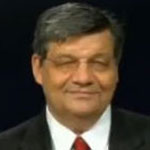 Justice Integrity Project, RFK Murder Scoop Divides His Family, Media As 50th Anniversary Nears On June 5, Andrew Kreig (shown at right), June 4, 2018. Two children of slain U.S. Sen. Robert F. Kennedy are disputing the official account of his assassination 50 years ago, prompting renewed debate before the June 5 anniversary.
Justice Integrity Project, RFK Murder Scoop Divides His Family, Media As 50th Anniversary Nears On June 5, Andrew Kreig (shown at right), June 4, 2018. Two children of slain U.S. Sen. Robert F. Kennedy are disputing the official account of his assassination 50 years ago, prompting renewed debate before the June 5 anniversary.
Longtime law professor Robert F. Kennedy Jr. and Washington Post reporter Tom Jackman raised the profile of the long-simmering controversy with Jackman’s front-page Sunday story on May 26 entitled, Who killed Bobby Kennedy? His son RFK Jr. doesn’t believe it was Sirhan Sirhan.
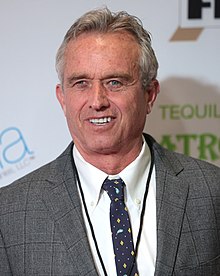
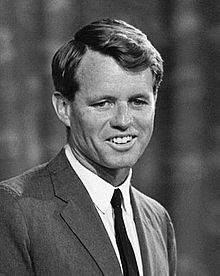 The son shown is shown at far right in a portrait by Gage Skidmore next to a file photo of his father. The late New York senator also is shown above at top in file photo taken during his California Democratic primary victory speech minutes before his murder. RFK was shot in a kitchen pantry after leaving the speaking stage at the Ambassador Hotel in Los Angeles.
The son shown is shown at far right in a portrait by Gage Skidmore next to a file photo of his father. The late New York senator also is shown above at top in file photo taken during his California Democratic primary victory speech minutes before his murder. RFK was shot in a kitchen pantry after leaving the speaking stage at the Ambassador Hotel in Los Angeles.
Jackman, a Post reporter covering law enforcement since 1998, obtained this scoop: The younger Kennedy was ready to go public in an in-depth manner after spending months re-examining the evidence and meeting in prison with Sirhan Sirhan, who was convicted of the murder in a 1969 jury trial in which defense counsel mounted scant defense.
JFKCounterCoup, RFK and JFK – Set Up as Marks in a Big Con Sting, Bill Kelly, June 4, 2018. The first Tuesday in June 2018 is the 50th anniversary of the assassination of Robert F. Kennedy, an event that is still being debated as to who was responsible, much like the murder of his brother President John F. Kennedy (shown above at the right of his brother).
Actually there were a string of political assassinations that are related in that if the murder of Medger Evers was properly investigated and prosecuted, JFK would not have been killed in the same manner, and JFK’s unresolved homicide led directly to the murders of MLK, RFK and Malcolm X.
The assassination of President Kennedy can be shown to have been not only a conspiracy, because the official version of events that begin and end with a deranged lone gunman can be demonstrated to be false, but was a more distinct type of conspiracy – a covert intelligence operation.
While such operations are designed to be deceptive and shield those responsible, and most successful covert intelligence operations go unnoticed, they become clearly visible and embarrassing when they fail, like the Bay of Pigs and Watergate.
May
May 31
 WhoWhatWhy, Analysis: Scientist Neutralizes JFK’s ‘Back and to the Left’ — Or Does He? Milicent Cranor, May 31, 2018. Should we necessarily trust “experts” writing in “peer reviewed” journals who seek to advance interpretations of events preferred by the very establishment whose approval is necessary for career advancement? Is this about National Security — the usual reason given when it comes to hiding the truth in the Kennedy assassination — or is it about job security?
WhoWhatWhy, Analysis: Scientist Neutralizes JFK’s ‘Back and to the Left’ — Or Does He? Milicent Cranor, May 31, 2018. Should we necessarily trust “experts” writing in “peer reviewed” journals who seek to advance interpretations of events preferred by the very establishment whose approval is necessary for career advancement? Is this about National Security — the usual reason given when it comes to hiding the truth in the Kennedy assassination — or is it about job security?
See if the following makes you wonder as well. In any case, if you like puzzles, you should find this report engaging.
To those who support the lone gunman theory, the shot came from behind — the supposed lair of Lee Harvey Oswald. But Kennedy was knocked backward, suggesting he was hit from the front. Which would mean Oswald did not fire that bullet.
This image — combined with the discrepancies in the government’s reporting of the most fundamental facts in the case — perpetuate the well-earned distrust of official sources. (For details on discrepancies in the medical-ballistic evidence, please go here, here, here, here, here, here, here, and here.)
Lone-gunman theory advocates have sought to explain away this anomaly, utilizing a long string of purported experts. The establishment media, showing little interest in exploring other possibilities, has long promoted these counter-intuitive explanations.
The latest comes from Nicholas R. Nalli, a Ph.D. in atmospheric and oceanic sciences and senior research scientist with I.M. Systems Group, Inc. at STAR. He performs research at the National Oceanic and Atmospheric Administration (NOAA) and is said to have expertise in geophysics, optics, and remote sensing.
 Boston Globe, RFK’s children divided over calls for a fresh investigation of his assassination, Michael Levenson, May 31, 2018. Two of Robert F. Kennedy’s children are calling for a new investigation into their father’s assassination, opening a rift in the famous family as it prepares to commemorate the 50th anniversary of his death next Wednesday. Kennedy, often known as “RFK,” is shown in a file photo.
Boston Globe, RFK’s children divided over calls for a fresh investigation of his assassination, Michael Levenson, May 31, 2018. Two of Robert F. Kennedy’s children are calling for a new investigation into their father’s assassination, opening a rift in the famous family as it prepares to commemorate the 50th anniversary of his death next Wednesday. Kennedy, often known as “RFK,” is shown in a file photo.
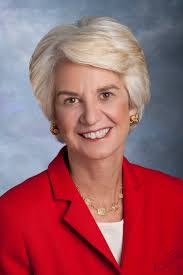 Kathleen Kennedy Townsend (shown at left), the former lieutenant governor of Maryland, told the Globe this week that she supports a new investigation, joining her brother Robert F. Kennedy Jr., who revealed last weekend that he visited convicted assassin Sirhan Sirhan in prison and believes someone else killed RFK. “I think Bobby makes a compelling case,” Townsend wrote in an e-mail.
Kathleen Kennedy Townsend (shown at left), the former lieutenant governor of Maryland, told the Globe this week that she supports a new investigation, joining her brother Robert F. Kennedy Jr., who revealed last weekend that he visited convicted assassin Sirhan Sirhan in prison and believes someone else killed RFK. “I think Bobby makes a compelling case,” Townsend wrote in an e-mail.
But two other children of Robert F. Kennedy said this week that they would not support a re-investigation, underscoring how divisive the second-gunman theory continues to be, a half-century after the presidential candidate, former attorney general, and senator from New York was killed in the pantry of the Ambassador Hotel in Los Angeles.
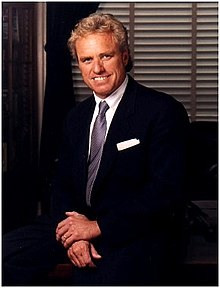 “As we approach the 50th anniversary of my father’s passing, I think what is most important is that our country and my family reflect on what my father stood for and fought for — a legacy promoting global peace, social justice, and civil rights,” Joseph P. Kennedy II (shown at right), the former congressman from Massachusetts, said in a statement.
“As we approach the 50th anniversary of my father’s passing, I think what is most important is that our country and my family reflect on what my father stood for and fought for — a legacy promoting global peace, social justice, and civil rights,” Joseph P. Kennedy II (shown at right), the former congressman from Massachusetts, said in a statement.
Kerry Kennedy, the president of a human rights organization named for her father, also indicated that she opposes a fresh examination of the evidence that, critics say, shows Sirhan could not have acted alone.
“The reason that people are interested in the circumstances of my father’s death is because of what he did with his life,” she said. “And I think we should focus on his life and not so much on his death — his moral imagination, his capacity for empathy, his quest to heal divisions, and his belief that one person can make a difference.”
Bill and Gayle Newman are shown on the ground on the grassy knoll in Dallas following the assassination of President John F. Kennedy on Nov. 22, 1963. They may have been the closest bystanders to the motorcade on Elm Street in the foreground. A waist-high picket fence is in the background.
Hot Springs Village Voice (Texas), Newmans remember witnessing the Kennedy assassination – Part I, Jeff Meek, May 22, 2018. Dallas residents Bill and Gayle Newman went about everyday life like thousands of others in Texas until that fateful day of Nov. 22, 1963. That afternoon they witnessed, up close, the assassination of President John F. Kennedy in Dealey Plaza.
From that day until today, they are sought after to interview about the horrifying experience, which they did for me on May 3 in their Texas home.Bill met Gayle while working at a frozen custard shop when in high school. She and some friends stopped in and before long they began dating, then married in 1958 and raised two children, Billy and Clayton. The four of them can be seen in many photos taken in the aftermath of the assassination.
In 1963 Dallas was a conservative city, not particularly Kennedy country, but the President wanted a trip to Texas to mend some political fences. After stops in San Antonio and Fort Worth, Air Force One landed at Love Field for a parade through the city, then lunch at the Trade Mart, then on to Austin to close out Nov. 22.
Some were worried about the Dallas stop. Posters had been going around that said “JFK: Wanted for Treason” and some newspaper articles were negative as well.
I asked Bill what he thought happened on Nov. 22, 1963. He was hesitant to answer at first, saying he shares what he saw, not what he thinks. But later Bill said, “A thought that goes through my mind is when you talk conspiracy, multiple shooters, to me if Lee Harvey Oswald was the shooter and in fact he was the only shooter, there very well could have been other people in the background. That’s always been a curiosity to me.”
Later in the interview Bill added another thought. If it was just Oswald alone, why are documents still being withheld or heavily redacted 55 years later?
May 30
 Black Op Radio, 50 Reasons For 50 Years, Episode 8: RFK Assassination Coverup, Host Len Osanic, May 30, 2018 (11:54 min. video). Famed forensic pathologist Dr. Cyril Wecht helps describe how Sirhan Sirhan’s first legal representatives let him down and all subsequent proceedings have suffered from the initial judgments.
Black Op Radio, 50 Reasons For 50 Years, Episode 8: RFK Assassination Coverup, Host Len Osanic, May 30, 2018 (11:54 min. video). Famed forensic pathologist Dr. Cyril Wecht helps describe how Sirhan Sirhan’s first legal representatives let him down and all subsequent proceedings have suffered from the initial judgments.
Future of Freedom Foundation, Opinion: A Conspiracy Contradiction at the Washington Times, Jacob G. Hornberger, May 30, 2018. I wonder if noted conservative writer R. Emmett Tyrell Jr. realizes that he has just contradicted himself in an op-ed in the Washington Times entitled, “Re-examining the RFK Assassination.” Based on a new book by Robert F. Kennedy Jr., Tyrell is calling for a new investigation into the assassination of Bobby Kennedy to determine if he was killed as part of a … conspiracy.
But according to the two opening paragraphs of Tyrell’s article, he has “never believed in conspiracy theories” because, he feels, it would be impossible for conspirators to keep the conspiracy secret.
But if that’s the case, then why is Tyrell calling for a new investigation into the Bobby Kennedy assassination? If there really was a conspiracy in that assassination, the conspirators, according to Tyrell’s opening paragraphs, would have talked. Since no such talk has ever emerged, that would mean, under Tyrell’s reasoning, that there could be no conspiracy and, therefore, no need to have a new investigation.
But the fact is that Tyrell is wrong. There are conspiracies, especially those involving assassination (i.e., murder), in which the conspirators don’t talk. After all, let’s not forget that a criminal conviction for murder can involve the death penalty or life in prison without parole. Oftentimes that is enough incentive to keep murder conspirators, especially professional ones, silent about what they have done.
In 1953, the CIA published an in-house manual on assassination, which the CIA was successful in keep secret for more than 40 years. The manual reflects that, early on, the CIA was specializing not only in the art of political assassination but, equally important, also in the art of covering up CIA involvement in the assassination.
As previously stated, in the early 1960s, the CIA and the Mafia entered into a top-secret assassination partnership. Thus, here you had two entities, both of whom specialized in murder and cover-up, getting together to jointly perform a political assassination.
Therefore, why shouldn’t people raise their eyebrows at least a little bit with respect to the political assassinations that took place in the 1960s, especially those in which the victims were sworn enemies of the Mafia or the CIA or both, such as President Kennedy, Bobby Kennedy, and Martin Luther King, and especially where the facts in the case are bit too pat?
JFKFacts.org, Who killed Bobby Kennedy? His son RFK Jr. doesn’t believe it was Sirhan Sirhan, Jefferson Morley, May 30, 2018. What is striking about this article is not only RFK Jr’s trip to see Sirhan and his growing suspicions. What is striking is that the Washington Post treats his views with respect.
May 29
President Kennedy and his friend Mary Pinchot Meyer at a White House gathering before her 1964 murder in still-disputed circumstances
 Justice Integrity Project, Rights Pioneer’s Obit Prompts Disputes Over JFK Murder Half-Truths, Andrew Kreig (shown at right), May 29, 2018. The Washington Post’s obituary last week of a pioneering African-American lawyer continued the newspaper’s controversial coverage of the 1963 assassination of President John F. Kennedy and the 1964 murder of JFK’s friend and lover Mary Pinchot Meyer.
Justice Integrity Project, Rights Pioneer’s Obit Prompts Disputes Over JFK Murder Half-Truths, Andrew Kreig (shown at right), May 29, 2018. The Washington Post’s obituary last week of a pioneering African-American lawyer continued the newspaper’s controversial coverage of the 1963 assassination of President John F. Kennedy and the 1964 murder of JFK’s friend and lover Mary Pinchot Meyer.
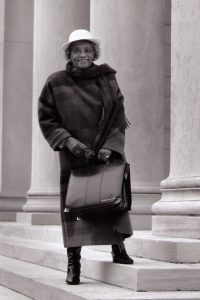 On May 21, the Post published a long and respectful obituary, Dovey Johnson Roundtree, 1914–2018, about an African-American woman by that name (shown at left) who overcame racial bias to carve out impressive careers in the military, law, and ministry in a Washington, DC work environment that was heavily segregated for most of her career.
On May 21, the Post published a long and respectful obituary, Dovey Johnson Roundtree, 1914–2018, about an African-American woman by that name (shown at left) who overcame racial bias to carve out impressive careers in the military, law, and ministry in a Washington, DC work environment that was heavily segregated for most of her career.
One of Roundtree’s early highlights was winning a 1965 jury acquittal for Raymond Crump, Jr., an African-American day laborer whom authorities had charged with murdering Meyer on a canal towpath near her home in the capital’s fashionable Georgetown neighborhood.
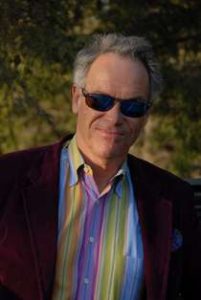 Obituary writer Harrison Smith reported on Roundtree’s civic commitment and skill in winning the acquittal. The reporter also quoted two commentators — journalist / author Nina Burleigh and attorney Robert Bennett — as opining that Crump was guilty, despite the jury verdict.
Obituary writer Harrison Smith reported on Roundtree’s civic commitment and skill in winning the acquittal. The reporter also quoted two commentators — journalist / author Nina Burleigh and attorney Robert Bennett — as opining that Crump was guilty, despite the jury verdict.
Several JFK assassination researchers, including this editor and another Meyer biographer, Peter Janney (right), sharply challenged via reader comments and letters to the Post its taint of Crump (and by implication Roundtree).
May 26
 Washington Post, Retropolis: Who killed Bobby Kennedy? His son RFK Jr. doesn’t believe it was Sirhan Sirhan, Tom Jackman, May 26, 2018. Just before Christmas, Robert F. Kennedy Jr. pulled up to the massive Richard J. Donovan Correctional Facility, a California state prison complex in the desert outside San Diego that holds nearly 4,000 inmates. Kennedy was there to visit Sirhan B. Sirhan, the man convicted of killing his father, Sen. Robert F. Kennedy (shown below at right in a file photo), nearly 50 years ago.
Washington Post, Retropolis: Who killed Bobby Kennedy? His son RFK Jr. doesn’t believe it was Sirhan Sirhan, Tom Jackman, May 26, 2018. Just before Christmas, Robert F. Kennedy Jr. pulled up to the massive Richard J. Donovan Correctional Facility, a California state prison complex in the desert outside San Diego that holds nearly 4,000 inmates. Kennedy was there to visit Sirhan B. Sirhan, the man convicted of killing his father, Sen. Robert F. Kennedy (shown below at right in a file photo), nearly 50 years ago.
While his wife, the actress Cheryl Hines, waited in the car, Kennedy met with Sirhan for three hours, he revealed to The Washington Post last week.  It was the culmination of months of research by Kennedy into the assassination, including speaking with witnesses and reading the autopsy and police reports.
It was the culmination of months of research by Kennedy into the assassination, including speaking with witnesses and reading the autopsy and police reports.
 “I got to a place where I had to see Sirhan,” Kennedy said. He would not discuss the specifics of their conversation. But when it was over, Kennedy had joined those who believe there was a second gunman, and that it was not Sirhan (shown in a 2016 prison photo) who killed his father, shown at right.
“I got to a place where I had to see Sirhan,” Kennedy said. He would not discuss the specifics of their conversation. But when it was over, Kennedy had joined those who believe there was a second gunman, and that it was not Sirhan (shown in a 2016 prison photo) who killed his father, shown at right.
“I went there because I was curious and disturbed by what I had seen in the evidence,” said Kennedy, an environmental lawyer and the third oldest of his father’s 11 children. “I was disturbed that the wrong person might have been convicted of killing my father. My father was the chief law enforcement officer in this country. I think it would have disturbed him if somebody was put in jail for a crime they didn’t commit.”
May 24
OpEdNews, Opinion: Deep State Swamp Monster Says There Is No Deep State, Caitlin Johnstone, May 24, 2018. Secretary of State and former CIA Director Mike Pompeo said during a hearing before the House Foreign Affairs Committee today that he does not believe there is a deep state in the CIA, the State Department or the Department of Justice, which is the same as a mob boss saying he doesn’t believe there is organized crime in the Mafia.May 22
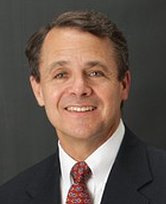 Future of Freedom Foundation, A Remarkable Lawyer and a Fascinating Case, Jacob G. Hornberger (right), May 24, 2018. The New York Times has published a lengthy obituary of one of most remarkable lawyers in U.S. history, an African-American woman named Dovey Johnson Roundtree (shown above), who passed away last Monday at the age of 104.
Future of Freedom Foundation, A Remarkable Lawyer and a Fascinating Case, Jacob G. Hornberger (right), May 24, 2018. The New York Times has published a lengthy obituary of one of most remarkable lawyers in U.S. history, an African-American woman named Dovey Johnson Roundtree (shown above), who passed away last Monday at the age of 104.
Her most famous case was a criminal case involving the murder of Mary Pinchot Meyer, the former wife of a high CIA official who had been having an intimate affair with President John F. Kennedy in the months leading up to his assassination.
The Meyer case is detailed in Peter Janney’s excellent book Mary’s Mosaic: The CIA Conspiracy to Murder John F. Kennedy, Mary Pinchot Meyer, and Their Vision for World Peace, which I highly recommend. If you decide to read the book, be sure you get the most recent edition because it provides an exciting update on Janney’s successful search for one of the principal witnesses in the case, a military officer named Lt. William Mitchell stationed at the Pentagon.
 JFKFacts.org, Opinion: Whitewash: JFK’s assassination in African-American eyes, Jefferson Morley (shown right), May 22, 2018. I’ve added a version of this poignant Dealey Plaza picture to the JFK Facts banner because I’d never really noticed its telling detail: a dozen African-Americans cheering the arrival of President Kennedy and First Lady Jackie in Dallas. It made me realize the obvious: black people – with engrained memories of extrajudicial lynchings – experienced JFK’s murder rather differently than most whites.
JFKFacts.org, Opinion: Whitewash: JFK’s assassination in African-American eyes, Jefferson Morley (shown right), May 22, 2018. I’ve added a version of this poignant Dealey Plaza picture to the JFK Facts banner because I’d never really noticed its telling detail: a dozen African-Americans cheering the arrival of President Kennedy and First Lady Jackie in Dallas. It made me realize the obvious: black people – with engrained memories of extrajudicial lynchings – experienced JFK’s murder rather differently than most whites.
For black Americans, JFK was the first of 35 U.S. presidents to endorse full civic equality for their community and families. For many white Americans (like future Presidents Ronald Reagan and George H.W. Bush) Kennedy’s endorsement of the Civil Rights Act was an assault on state’s rights. Not since Lincoln had a true emancipationist lived in the White House.
For blacks, memories of assassination were fresh. In 1963 white Americans in 1963 had not recently experienced the assassination of a political leader. African-Americans had just seen Medgar Evers, field secretary of the Mississippi NAACP, get gunned down in June 1963. Needless to say, Evers was not killed by a “lone nut.”
Would you have been eager to share your thoughts with the thoroughly racist Dallas Police Department? Or the thoroughly racist FBI? Or the thoroughly white national news media? The answer is no. And so the experience of these witnesses was whitewashed from history. That blank page is part of the JFK story too.
May 21
Washington, Dovey Johnson Roundtree, 1914–2018, Harrison Smith, May 21, 2018. Defense lawyer and civil rights warrior dies at 104. Ms. Roundtree played a critical early role in the desegregation of interstate bus travel and mentored several generations of black lawyers.
Dovey Johnson Roundtree, a Washington criminal defense lawyer and courtroom warrior for civil rights who played a critical early role in the desegregation of interstate bus travel and mentored several generations of black lawyers, died May 21 at an assisted-living facility in Charlotte. She was 104.
The cause was complications from Alzheimer’s disease, said Jerry L. Hunter, her cousin and law partner.
In a career that spanned nearly half a century, Ms. Roundtree defended predominantly poor African American clients — as well as black churches, community groups and the occasional politician. She was, former Fisk University president Walter J. Leonard once told The Washington Post, “a legal-aid clinic before there were legal-aid clinics.”
Her best-known case involved the black day laborer accused in the 1964 killing of Georgetown socialite and painter Mary Pinchot Meyer, who reportedly had an affair with President John F. Kennedy (shown together). She won him an acquittal despite what initially appeared to be damning witness testimony.
Dovey Johnson Roundtree is shown outside the United States District Court in Washington, about 1985. “As a woman, and as a woman of color in an age when black lawyers had to leave the courthouse to use the bathrooms, she dared to practice before the bar of justice and was unflinching,” the co-author of her memoir said.
![]() New York Times, Dovey Johnson Roundtree, Barrier-Breaking Lawyer, Dies at 104, Margalit Fox, May 21, 2018. The jurors were looking at her when they filed into court. That, Dovey Johnson Roundtree knew, could have immense significance for her client, a feebleminded day laborer accused of one of the most sensational murders of the mid-20th century.
New York Times, Dovey Johnson Roundtree, Barrier-Breaking Lawyer, Dies at 104, Margalit Fox, May 21, 2018. The jurors were looking at her when they filed into court. That, Dovey Johnson Roundtree knew, could have immense significance for her client, a feebleminded day laborer accused of one of the most sensational murders of the mid-20th century.
Little had augured well for that client, Raymond Crump Jr., during his eight-day trial in United States District Court in Washington: Mr. Crump, who had been found near the crime scene, was black and poor. The victim was white, glamorous and supremely well connected. The country, in the summer of 1965, seethed with racial tension amid the surging civil rights movement.
Federal prosecutors had amassed a welter of circumstantial evidence — including 27 witnesses and more than 50 exhibits — to argue that on Oct. 12, 1964, Mr. Crump had carried out the execution-style shooting of Mary Pinchot Meyer, a Washington socialite said to have been a former lover of President John F. Kennedy.
By contrast, Ms. Roundtree, who died on Monday at 104, had chosen to present just three witnesses and a single exhibit to the jury, which comprised men and women, blacks and whites. Her closing argument was only 20 minutes long.
Now, on July 30, 1965, the jury, having deliberated, was back. The court clerk handed the verdict slip to the judge, Howard F. Corcoran. For most observers, inside the courtroom and out, conviction — and an accompanying death sentence — was a foregone conclusion.
“Members of the jury,” Judge Corcoran said. “We have your verdict, which states that you find the defendant, Ray Crump Jr., not guilty.”
Ms. Roundtree’s defense, which hinged partly on two forensic masterstrokes, made her reputation as a litigator of acuity, concision and steel who could win even the most hopeless trials. And this in a case for which she had received a fee of one dollar.
“As a woman, and as a woman of color in an age when black lawyers had to leave the courthouse to use the bathrooms, she dared to practice before the bar of justice and was unflinching,” Katie McCabe, the co-author of Ms. Roundtree’s memoir, Justice Older Than the Law, said in an interview for this obituary in 2016. “She was a one-woman Legal Aid Society before people used that term.”
May 16
CBS radio reporter Richard Gibson, now revealed as a CIA informant, shown in a photo via the Richard Gibson Collection at George Washington University
 JFKFacts.org, Opinion: What the curious case of Richard Gibson tells us about Lee Harvey Oswald, Jefferson Morley (shown at right), May 16, 2018. I was on BBC 3 Radio yesterday talking about the curious case of Richard Gibson, co-founder of the leftist Fair Play for Cuba Committee and, it turns out, a longtime CIA spy.
JFKFacts.org, Opinion: What the curious case of Richard Gibson tells us about Lee Harvey Oswald, Jefferson Morley (shown at right), May 16, 2018. I was on BBC 3 Radio yesterday talking about the curious case of Richard Gibson, co-founder of the leftist Fair Play for Cuba Committee and, it turns out, a longtime CIA spy.
The larger context of Gibson’s story, which I broke in Newsweek, tells us a lot about the CIA’s surveillance of Lee Oswald in 1963. The fact that CIA dumped Gibson’s file while he is still alive is striking. The agency is not careless about protecting “sources and methods.” A journo-friend who knows the CIA well, asks: “Do you think this was just a massive screw-up, or some sort of revenge for something he did?”
 Probably the latter. Maybe CIA found out Gibson was selling information to the KGB as well. Maybe Gibson gave them bad intelligence. There has to be a reason why CIA officials chose to burn a living source–especially after President Trump tweeted that living sources would be protected.
Probably the latter. Maybe CIA found out Gibson was selling information to the KGB as well. Maybe Gibson gave them bad intelligence. There has to be a reason why CIA officials chose to burn a living source–especially after President Trump tweeted that living sources would be protected.
Its too bad Gibson cannot give his side of the story. Suspicions of Gibson have been around a long time. Anthony Summers and Robbyn Swan found some of the first evidence 25 years ago and asked Gibson about it. He denied all.
The Fair Play for Cuba Committee was not a CIA operation. It was a CIA target. The Gibson story, along with a lot of other evidence, shows how agency officers sought to penetrate, manipulate, control, and disrupt Americans who sympathized with the Cuban revolution. One of those Americans was Lee Oswald.
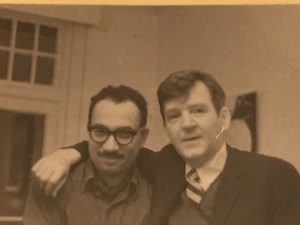 Gibson (shown at left) and his CBS News colleague Robert Taber (at right in a photo from the Richard Gibson Papers at George Washington University) did not intend the FPCC to become a mass organization. They brought together about 30 intellectuals to sign an ad in the New York Times in April 1960. They hoped to do nothing more than persuade news organizations and newspaper readers to look at the aims and accomplishments of the Cuban revolution more objectively.
Gibson (shown at left) and his CBS News colleague Robert Taber (at right in a photo from the Richard Gibson Papers at George Washington University) did not intend the FPCC to become a mass organization. They brought together about 30 intellectuals to sign an ad in the New York Times in April 1960. They hoped to do nothing more than persuade news organizations and newspaper readers to look at the aims and accomplishments of the Cuban revolution more objectively.
At a time when Jim Crow ruled America, the racial diversity of the signatories, starting with the writer James Baldwin, is striking. The fact that black intellectuals signed on to a foreign policy manifesto, when most whites expected blacks to restrict themselves to the “Negro question” was also radical.
The New York Times advertisement announcing the creation of the FPCC
Striking too was the instantly hostility of the CIA, FBI, and Senate Internal Security Committee. As college students and professors formed chapters of the Committee, the FPCC was suddenly a growing organization and perceived as a growing threat to U.S. officials.
 The popularity of the idea that American should give Cuba a break forced Gibson to take on a job he never expected to have: running a national political movement. He was not a CIA source — not yet. But the U.S. government was already seeking to disrupt and destroy his organization, by any means.
The popularity of the idea that American should give Cuba a break forced Gibson to take on a job he never expected to have: running a national political movement. He was not a CIA source — not yet. But the U.S. government was already seeking to disrupt and destroy his organization, by any means.
Gibson was wiretapped by the CIA while talking to June Cobb, a CIA informant (shown in a 1962 photo) known as LICOOKY-1. He was served with two subpoenas by the Senate Internal Security Committee, which was determined to press criminal charges against the group in 1961.
The FBI intercepted and opened the group’s mail. When the FPCC hired an accountant to handle the flood of donations, the FBI turned him an informant.
Gibson, feeling harassed and underpaid, resigned from the FPCC and offered his services to the CIA in July 1962. By 1963, the FPCC had dozens of chapters around the country. The Senate Internal Security Committee was still seeking to demonize and disrupt the group with hostile hearings. And the CIA had the co-founder of the group as a potential source.
May 15

 Newsweek, CIA Reveals Name of Former Spy in JFK Files — And He’s Still Alive, Jefferson Morley (shown at right), May 15, 2018. In the late 1940s and early 1950s, Paris beckoned African-American intellectuals hoping to escape the racism and conformity of American life. Chief among them: Richard Wright, the acclaimed author of Native Son and Black Boy, who arrived in 1947. He was soon joined by Chester Himes, an ex-convict who mastered hard-boiled detective fiction, James Baldwin, the precocious essayist, and Richard Gibson, an editor at the Agence France-Presse.
Newsweek, CIA Reveals Name of Former Spy in JFK Files — And He’s Still Alive, Jefferson Morley (shown at right), May 15, 2018. In the late 1940s and early 1950s, Paris beckoned African-American intellectuals hoping to escape the racism and conformity of American life. Chief among them: Richard Wright, the acclaimed author of Native Son and Black Boy, who arrived in 1947. He was soon joined by Chester Himes, an ex-convict who mastered hard-boiled detective fiction, James Baldwin, the precocious essayist, and Richard Gibson, an editor at the Agence France-Presse.
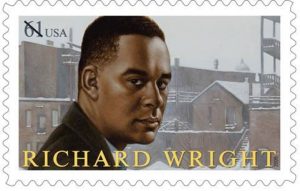 These men became friends, colleagues and, soon, bitter rivals. Their relationship blew up after Gibson forged a letter, published in Life magazine under the name of one of Wright’s friends, attacking the French government for refusing to give up its colony in Algeria.
These men became friends, colleagues and, soon, bitter rivals. Their relationship blew up after Gibson forged a letter, published in Life magazine under the name of one of Wright’s friends, attacking the French government for refusing to give up its colony in Algeria.
Wright (shown at left on a postage stamp) was enraged, and he dramatized their falling out in a roman à clef he called Island of Hallucination, which was never published, even after his death in 1960. In 2005, Gibson published a memoir in a scholarly journal recounting the political machinations his former friend had dramatized, telling The Guardian he had obtained a copy of the manuscript and had no objections to its publication. “I turn up as Bill Hart, the ‘superspy…’,” Gibson said of the story.
 Wright’s book was apparently prescient. On April 26, when the National Archives released thousands of documents pertaining to the assassination of President John F. Kennedy, they included three fat CIA files on Gibson. According to these documents, he had served U.S. intelligence from 1965 until at least 1977. The Gibson files revealed his CIA code name, QRPHONE-1, his salary — as much as $900 a month — his various missions, as well as his attitude (“energetic”) and performance (“a self-starter”).
Wright’s book was apparently prescient. On April 26, when the National Archives released thousands of documents pertaining to the assassination of President John F. Kennedy, they included three fat CIA files on Gibson. According to these documents, he had served U.S. intelligence from 1965 until at least 1977. The Gibson files revealed his CIA code name, QRPHONE-1, his salary — as much as $900 a month — his various missions, as well as his attitude (“energetic”) and performance (“a self-starter”).
The most curious part of the story: Gibson is still alive. He’s 87 years old and still living abroad. (Gibson “will not be able to your questions,” said a family friend who answered the phone at his residence.)
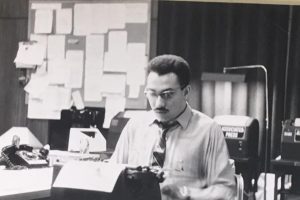 Gibson (shown at right working for CBS radio in a photo now at George Washington University in a collection of his papers) was still an “active agent” in 1977, when Congress reopened the JFK investigation and started asking questions about the agency’s penetration of the FPCC in 1963.
Gibson (shown at right working for CBS radio in a photo now at George Washington University in a collection of his papers) was still an “active agent” in 1977, when Congress reopened the JFK investigation and started asking questions about the agency’s penetration of the FPCC in 1963.
The House Select Committee on Assassinations asked to see Gibson’s CIA file. The agency only showed investigators a small portion of his file, but the entirety of the still-classified material became part of the CIA’s archive of JFK records.
That designation would eventually change. In October 1992, Congress passed a law mandating release of all JFK files within 25 years. Gibson’s secret was safe for the time being. In 1985, he successfully sued a South African author who asserted he was a CIA agent. The book was withdrawn, and the publisher issued a statement declaring that “Mr. Gibson has never worked for the United States Central Intelligence Agency,” a claim that no longer seems tenable.
In 2013, Gibson sold his collected papers to George Washington University in Washington, D.C. To celebrate the acquisition, the university held a daylong symposium, “Richard Gibson: Literary Contrarian & Cold Warrior,” dedicated to “furthering our understanding of the intellectual and literary history of the Cold War.”
With the release of Gibson’s CIA files, scholars can now discern the hidden hand of the American clandestine service in writing that history. When it came to the character who inspired Bill Hart, “the superspy,” Richard Wright’s fiction was perhaps ahead of its time.
May 10
Black Vault, J.F.K. Assassination Records Archive – Previously Withheld JFK Assassination Documents Database, Staff archive, May 10, 2018.
John F. Kennedy, the 35th President of the United States, was assassinated on Friday, November 22, 1963 at 12:30 p.m. Central Standard Time in Dallas, Texas while riding in a motorcade in Dealey Plaza.
Kennedy was allegedly fatally shot by a former U.S Marine, Lee Harvey Oswald, while he was riding with his wife, Jacqueline, Texas Governor John Connally, and Connally’s wife, Nellie, in a presidential motorcade. A ten-month investigation by the Warren Commission from November 1963 to September 1964 concluded that Oswald acted alone in shooting Kennedy, and that Jack Ruby also acted alone when he killed Oswald before he could stand trial. Kennedy’s death marked the fourth (following Lincoln, Garfield, and McKinley) and most recent assassination of an American President. Vice President Lyndon B. Johnson became President upon Kennedy’s death.
May 9
 WhoWhatWhy, JFK Files Reveal US Biological Warfare Plans Against Cuba, Jimmy Falls, May 9, 2018. It is well known that the US tried to kill Fidel Castro, but recently released JFK assassination-related files show that the Pentagon actually planned to use biological weapons against the entire country, killing plants and animals in order to ruin its economy and effect regime change.
WhoWhatWhy, JFK Files Reveal US Biological Warfare Plans Against Cuba, Jimmy Falls, May 9, 2018. It is well known that the US tried to kill Fidel Castro, but recently released JFK assassination-related files show that the Pentagon actually planned to use biological weapons against the entire country, killing plants and animals in order to ruin its economy and effect regime change.
In the summer of 1975, congressional staffer Loch Johnson was searching through classified papers at the LBJ Library in Austin, Texas, when he came across something he couldn’t believe — a covert plan by the US military to deploy biological weapons against Cuba.
This was more than Johnson was bargaining for, even though he was at the archive looking for files related to covert actions directed against Cuba. By July 1975, the Watergate hearings had finished, and three separate, high-level investigations were underway — all aimed at revealing covert and possibly illegal activities of US intelligence agencies, including assassination.
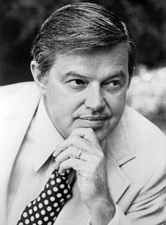 Johnson was working as top aide to Sen. Frank Church (D-ID, shown at left), chair of the Senate Select Committee to Study Governmental Operations with Respect to Intelligence Activities, the so-called “Church Committee.”
Johnson was working as top aide to Sen. Frank Church (D-ID, shown at left), chair of the Senate Select Committee to Study Governmental Operations with Respect to Intelligence Activities, the so-called “Church Committee.”
The American public knew that their government had a tense relationship with Cuba, especially with its feisty leader, Fidel Castro. The US had unsuccessfully underwritten a Cuban-exile paramilitary invasion at the Bay of Pigs in 1961 — a disaster in every sense. And just a year later, the world came to the brink of nuclear apocalypse after a showdown with the Soviet Union over nuclear missiles it had placed in Cuba.
What the public was not aware of then, and would only discover in later decades, was that the CIA had attempted all manner of assassination plots against Castro, in addition to widespread sabotage actions — such as burning sugarcane fields and blowing up power plants — with the goal of undermining Cuba’s Communist government.
May 4
 Future of Freedom Foundation, Opinion: JFK and the Inconceivable Doctrine, Part 2, Jacob G. Hornberger (shown right), May 4, 2018. Three years ago, I wrote an article entitled “JFK and the Inconceivable Doctrine,” in which I pointed how many lone-nut theorists in the JFK assassination have reached their conclusion based not on an examination of the circumstantial evidence in the case but instead simply on the notion that it is inconceivable that the U.S. national-security establishment would have carried out a domestic regime-change operation by assassinating an American president.
Future of Freedom Foundation, Opinion: JFK and the Inconceivable Doctrine, Part 2, Jacob G. Hornberger (shown right), May 4, 2018. Three years ago, I wrote an article entitled “JFK and the Inconceivable Doctrine,” in which I pointed how many lone-nut theorists in the JFK assassination have reached their conclusion based not on an examination of the circumstantial evidence in the case but instead simply on the notion that it is inconceivable that the U.S. national-security establishment would have carried out a domestic regime-change operation by assassinating an American president.
 The purpose of this article is to elaborate on this theme….The Pentagon and the CIA considered Kennedy to be a naïve, incompetent, treasonous president who was placing America in much greater danger than foreign leaders like Arbenz, Castro (shown below), and
The purpose of this article is to elaborate on this theme….The Pentagon and the CIA considered Kennedy to be a naïve, incompetent, treasonous president who was placing America in much greater danger than foreign leaders like Arbenz, Castro (shown below), and 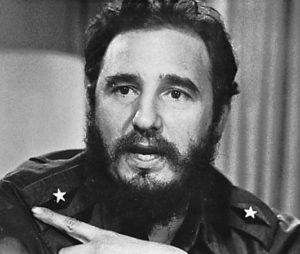 Lumumba were doing and like Allende would later do.
Lumumba were doing and like Allende would later do.
For his part, Kennedy considered people with that type of mindset to be nut-balls. That’s why after seeing an advertisement accusing him of treason in the Dallas Morning News on the morning of the assassination, he turned to his wife Jackie and remarked, “We are headed into nut country today.”
Notwithstanding the overwhelming amount of circumstantial evidence pointing toward a national-security domestic-regime change operation carried out on November 22, 1963, many lone-nut theorists continue to hew to the notion that it is just inconceivable that the U.S. national-security establishment would act to protect America from a president whose policies were perceived to constitute a grave threat to “national security.” To actually explore the evidence in the case is still just too frightening for them.
May 3
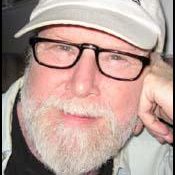 JFKCountercoup, Opinion: The Truth in Our Lifetime: Some Positive Attributes of the Extension of the JFK Act, Bill Kelly (shown at right), May 3, 2018. The Truth in Our Lifetime: Some positive attributes of the Extension of the JFK Act.
JFKCountercoup, Opinion: The Truth in Our Lifetime: Some Positive Attributes of the Extension of the JFK Act, Bill Kelly (shown at right), May 3, 2018. The Truth in Our Lifetime: Some positive attributes of the Extension of the JFK Act.
It is very disturbing that the JFK Act — the law of the land is not being enforced today, a fact that should make it relevant to everyone.
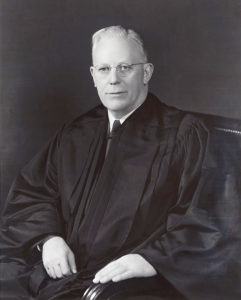 When Warren Commission chairman Earl Warren (shown at left) was asked if the secret records on the assassination would be released to the public he replied, “Yes, but not in your lifetime.”
When Warren Commission chairman Earl Warren (shown at left) was asked if the secret records on the assassination would be released to the public he replied, “Yes, but not in your lifetime.”
And now it may not be in ours, as a lot of people, many of whom are not alive today, worked very hard to get the JFK Act passed by Congress and reluctantly signed by President George Herbert Walker Bush on October 26, 1992.
 The law prescribed that all of the government records on the assassination of President Kennedy be released in full to the public by October 26, 2017, twenty-five years to the day Bush signed it into law. When he signed it however, Bush added a rider to the law that provided the President — and only the President, with the authority to continue withholding certain records beyond the October 26, 2017 date on the grounds of national security, where their release would harm American interests.
The law prescribed that all of the government records on the assassination of President Kennedy be released in full to the public by October 26, 2017, twenty-five years to the day Bush signed it into law. When he signed it however, Bush added a rider to the law that provided the President — and only the President, with the authority to continue withholding certain records beyond the October 26, 2017 date on the grounds of national security, where their release would harm American interests.
There are also a number of assassination records that fall into specific categories that are exempt from the JFK Act provisions — over 500 records are being withheld in full under sections 10 and 11, special “deeds of gift” and grand jury records, as well as IRS tax records.
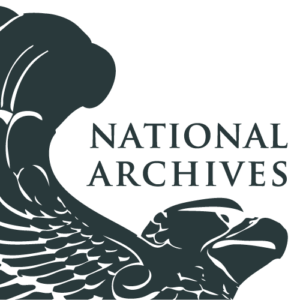 The “deeds of gift” records are those that have been donated to the National Archives and stored in the JFK collection but are restricted by the donor, and these records include William Manchester’s notes and papers he used to write his book The Death of the President, and individual oral history recordings and transcripts such as Jackie Kennedy’s memories and beliefs, that are restricted by the Kennedy family.
The “deeds of gift” records are those that have been donated to the National Archives and stored in the JFK collection but are restricted by the donor, and these records include William Manchester’s notes and papers he used to write his book The Death of the President, and individual oral history recordings and transcripts such as Jackie Kennedy’s memories and beliefs, that are restricted by the Kennedy family.
The IRS laws take precedence over the JFK Act, so individual tax records are totally exempt, though Marina Oswald reportedly agreed to allow her family’s tax records be released, and the very first document I read from among those recently released in the October 2018 batch is a good example.
In reading the House Select Committee on Assassinations (HSCA) report on an interview with former Louisiana State policeman Francis Fruge, a single social security number was redacted, and one that is not important. The rest of the document is extremely significant however, as it confirms most of the facts concerning Rose Cheramie, the women whose story is told in the opening scenes of Oliver Stone’s film JFK.
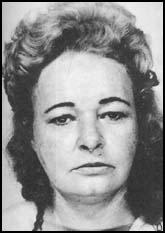 Found unconscious on the side of the road outside the Silver Slipper saloon in rural Louisiana, Cheramie (shown at left) told officer Fruge, who drove her to the hospital, that she was with two Cubans on their way to Dallas to kill Kennedy and do a drug deal when she was thrown out of the car.
Found unconscious on the side of the road outside the Silver Slipper saloon in rural Louisiana, Cheramie (shown at left) told officer Fruge, who drove her to the hospital, that she was with two Cubans on their way to Dallas to kill Kennedy and do a drug deal when she was thrown out of the car.
After JFK was killed a few days later, Fruge re-interviewed her, got the details of the drug deal, all of which he confirmed, and showed her mug shots of some Cubans and she picked out Sergio Aracha Smith, a New Orleans Cuban who came into play in the Garrison investigation.
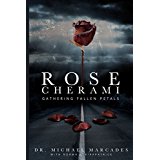 The owner of the Silver Slipper saloon, a roadhouse bar, also confirmed that Sergio Aracha Smith was a customer who was in the night Cheramie was there. Cheramie was later found dead, on the side of the road, run over by a car, another suspicious death. (Her only son, Dr. Michael Marcados, co-authored in 2016 a well-reviewed ebook biography “Rose Cherami: Gathering Fallen Petals“).
The owner of the Silver Slipper saloon, a roadhouse bar, also confirmed that Sergio Aracha Smith was a customer who was in the night Cheramie was there. Cheramie was later found dead, on the side of the road, run over by a car, another suspicious death. (Her only son, Dr. Michael Marcados, co-authored in 2016 a well-reviewed ebook biography “Rose Cherami: Gathering Fallen Petals“).
While I had seen a redacted version of the same HSCA report, this one was only missing the social security number.
And as I perused other documents in this 2018 batch — what the Archives calls “The Final Release,” though more are expected by October 2021, I found that every document I reviewed was significant, and I will be going over them in detail in a later report.
May 2
 Future of Freedom Foundation, Opinion: Did Trump and the CIA Strike a Deal on the JFK Records? Jacob G. Hornberger (shown right), May 2, 2018. Did President Trump grant the CIA an additional 3 1/2 years of secrecy on its JFK assassination-related records because he truly believed that “national security” was at stake? Or did Trump grant the CIA’s request for continued secrecy as part of a negotiated bargain that Trump reached with the CIA?
Future of Freedom Foundation, Opinion: Did Trump and the CIA Strike a Deal on the JFK Records? Jacob G. Hornberger (shown right), May 2, 2018. Did President Trump grant the CIA an additional 3 1/2 years of secrecy on its JFK assassination-related records because he truly believed that “national security” was at stake? Or did Trump grant the CIA’s request for continued secrecy as part of a negotiated bargain that Trump reached with the CIA?
Consider the following tweets that Trump sent out the week before October 26, 2017, when the 25-year deadline set by the JFK Records Act was set to expire:
October 21: “Subject to the receipt of further information, I will be allowing, as President, the long blocked and classified JFK FILES to be opened.”
October 25: “The long anticipated release of the #JFKFiles will take place tomorrow. So interesting!
 Notice something important here: Trump makes no mention of any request by the CIA for continued secrecy. How likely is it that the CIA had not made such a request prior to that week? Not likely at all. It is inconceivable that the CIA would wait until October 26, rush into Trump’s office and declare, “Mr. President, we totally forgot about the deadline set 25 years ago and we need an additional time to review the records.” (As an interesting aside, notice that neither Trump, the CIA, nor the National Archives has disclosed to the public any written request by the CIA or any other federal agency for continued secrecy of the JFK assassination-related records.)
Notice something important here: Trump makes no mention of any request by the CIA for continued secrecy. How likely is it that the CIA had not made such a request prior to that week? Not likely at all. It is inconceivable that the CIA would wait until October 26, rush into Trump’s office and declare, “Mr. President, we totally forgot about the deadline set 25 years ago and we need an additional time to review the records.” (As an interesting aside, notice that neither Trump, the CIA, nor the National Archives has disclosed to the public any written request by the CIA or any other federal agency for continued secrecy of the JFK assassination-related records.)
There is another possible explanation for what was going on during the week of October 26. As I pointed out my October 27, 2017, article “The JFK Cover-Up Continues,” the possibility exists that Trump was negotiating with the CIA and taking the matter to the brink with his two tweets — that is, that Trump knew that continued secrecy was critically important to the CIA but that he wanted something in return. You know, The Art of the Deal.
If that is what was happening, then Trump was likely communicating to the CIA with his tweets, “Give me what I want or I release the records.” That would mean that at the last minute the CIA caved and gave Trump what he wanted, which would explain why Trump suddenly changed his mind on October 26 and granted another six months of secrecy, contrary to what his two tweets indicated he would do immediately prior to that October 26 deadline.
What was something that would have been important to Trump that the CIA could have given him? As I indicated in my October 27 article, what would have been important to Trump would have been an exoneration in the Russia investigation, at the very least with respect to Congress and maybe, hopefully, even with respect to the investigation being conducted by the special counsel and former FBI Director Robert Mueller. As part of the deal, Trump would have demanded that the CIA exercise its considerable power and influence to bring one and hopefully both investigations to a satisfactory conclusion.
Why only six months of secrecy back in October? Because as I indicated in my October 27 article, Trump would have wanted a guarantee that the CIA would live up to its end of the bargain. If the CIA didn’t deliver at its end, Trump could still order a release of the records in April. If the CIA delivered, Trump could grant its request for additional secrecy when the April deadline came.
On April 26, the day that the six-month extension expired, Trump granted the CIA another 2 1/2 years of secrecy. Maybe it’s just a coincidence but one day later, April 27, the House Intelligence Committee released its final report exonerating Trump in its investigation into the Russia brouhaha.
May 2
McClatchy DC, Former Miami Herald editor’s ties to CIA confirmed, but still unclear, in latest JFK docs, Kevin G. Hall, May 2, 2018. The roughly 5 million documents that make up the (mostly) released JFK assassination files revealed many secrets. But some of the material tantalizes without providing full answers.
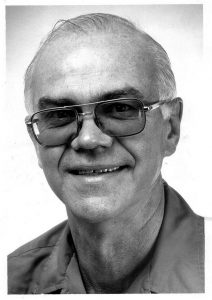 That includes documents mentioning legendary Miami Herald reporter and editor Don Bohning (shown at left), a longtime Latin America expert whose colorful career was punctuated by coups, expulsions and a close relationship with CIA sources. How close? That’s the vexing question.
That includes documents mentioning legendary Miami Herald reporter and editor Don Bohning (shown at left), a longtime Latin America expert whose colorful career was punctuated by coups, expulsions and a close relationship with CIA sources. How close? That’s the vexing question.
One declassified document shows the CIA had granted Provisional Security Approval to Bohning on Aug. 21, 1967, and Covert Security Approval on Nov. 14 of the same year. Dated June 14, 1968, the document says Bohning had the agency approvals so he could be used “as a confidential informant with natural access to information about news companies and personalities.”
It’s unclear, however, whether that reflected a deep relationship, or whether Bohning even knew about it. Bohning’s widow, Geraldine, declined to comment. The document also said Bohning was given the cryptonym AMCARBON-3, and elsewhere noted that Bohning “was not to be used operationally nor given clandestine training or assignments.” The AM was code for Cuba and CARBON appears to be a designation for journalists.
Another JFK assassination document, dating to June 1964, also revealed that the person who went by the cryptonym AMCARBON-1 was Bohning’s colleague at the Herald, Alvin Burt. The documents, declassified further over the past year to reveal more detail, show Burt actively passing information to the CIA about exile-group infiltration plans in Cuba.
None of this would have come to light but for New Orleans District Attorney James Garrison, who in 1966 began investigating alleged links to the assassination of President John F. Kennedy. Garrison’s probe ended with the 1969 arrest and trial of local businessman Clay Shaw, who was quickly acquitted by a jury.
May 1
President Kennedy is shown above delivering an iconic speech on June 10, 1963 at American University calling for world peace. Some scholars say the courageous speech during the Cold War — combined with Kennedy’s actions antagonizing CIA, Pentagon, anti-communist, Mafia, segregationist, Cuban exile and wealthy Texas oil forces — helped set in motion his death later in the year.
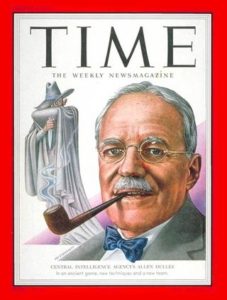 Among other actions, JFK’s fury at the CIA’s manipulations during the Bay of Pigs invasion led him to oust the top three CIA executives. One of them, CIA Director Allen Dulles (right, on a Time magazine cover), an operative for decades on behalf of some of America’s leading dynasties, would help guide six other Warren Commission officials supervising the Commission staff writing the official report in 1964 on JFK’s death.
Among other actions, JFK’s fury at the CIA’s manipulations during the Bay of Pigs invasion led him to oust the top three CIA executives. One of them, CIA Director Allen Dulles (right, on a Time magazine cover), an operative for decades on behalf of some of America’s leading dynasties, would help guide six other Warren Commission officials supervising the Commission staff writing the official report in 1964 on JFK’s death.
Justice Integrity Project, Trump suppresses JFK murder records; Violates pledge; Bows to #CIA, #Deep State, Andrew Kreig (shown at right), May 1, 2018. On April 26 this spring, the last day of the historic deadline for JFK assassination records release, President Trump ordered suppression until 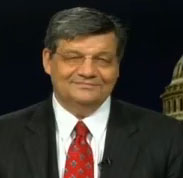 2021 of some 520 remaining classified records regarding the 1963 murder of President John F. Kennedy (JFK) in Dallas.
2021 of some 520 remaining classified records regarding the 1963 murder of President John F. Kennedy (JFK) in Dallas.
In violating his earlier pledge to release all records, Trump released at least parts of some 19,000 other records but cited only vague “national security” concerns for the redactions and outright document suppressions despite a congressionally passed legal requirement in the 1992 “JFK Act” that he and his administration provide a specific reason to suppress each withheld record.
This column excerpts commentary from leading JFK researchers in the days since Trump and the Archives announced the decision.
April
April 30
 Justice Integrity Project, Historic Conference May 3-4 To Document MLK, RFK Murder Evidence Cover-ups, Andrew Kreig (shown at right), April 30, 2018. On the unique occasion of the 50th anniversary this spring of the assassinations of Dr. Martin Luther King, Jr., and Sen. Robert F. Kennedy, an unprecedented array of scientific, legal and historical experts will convene at Duquesne University in Pittsburgh from May 3 to 4 to describe the shocking shortcomings by law enforcers and the media in reporting on the deaths.
Justice Integrity Project, Historic Conference May 3-4 To Document MLK, RFK Murder Evidence Cover-ups, Andrew Kreig (shown at right), April 30, 2018. On the unique occasion of the 50th anniversary this spring of the assassinations of Dr. Martin Luther King, Jr., and Sen. Robert F. Kennedy, an unprecedented array of scientific, legal and historical experts will convene at Duquesne University in Pittsburgh from May 3 to 4 to describe the shocking shortcomings by law enforcers and the media in reporting on the deaths.
The conference will feature, among others, experts who will describe their belief that those convicted of the killings, James Earl Ray for MLK’s death and Sirhan Sirhan for RFK’s, were patsies who, according to scientific and witness evidence, could not possibly have killed the iconic 1960s leaders in the separate shootings. The 17th annual forensics conference is organized by the Cyril Wecht Institute of Forensic Science and Law, based at the university.
Advance registration for in-person and remote audiences for the conference is here. Advance registration closes at noon Wednesday, May 2. But registration later is available on a walk-in basis if space is available at the university hall.
The institute’s namesake, the eminent forensic pathologist and longtime Allegheny County Coroner Cyril Wecht, M.D., J.D., has for decades provided medical evidence regarding deaths. In a photo by Noel St. John, Wecht is shown at right during a news conference last year at the National Press Club where Wecht described the public interest in disclosure of suppressed records regarding the 1963 assassination of President John F. Kennedy in Dallas.
April 26
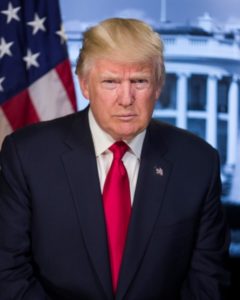 Washington Post, Trump delays release of some JFK files until 2021, bowing to national security concerns, Ian Shapira, April 26, 2018. After President Trump vowed last year to release all the long secret files related to the JFK assassination, the administration announced Thursday that some documents will be withheld until October 2021 for national security reasons.
Washington Post, Trump delays release of some JFK files until 2021, bowing to national security concerns, Ian Shapira, April 26, 2018. After President Trump vowed last year to release all the long secret files related to the JFK assassination, the administration announced Thursday that some documents will be withheld until October 2021 for national security reasons.
In a White House memo, Trump said that the nation’s intelligence community persuaded him to keep some documents secret because their exposure could harm “identifiable national security, law enforcement, and foreign affairs concerns.”
 Trump gave the CIA, FBI and other agencies a deadline of April 24 to release the last remaining documents related to the investigation into President Kennedy’s assassination by Lee Harvey Oswald on Nov. 22, 1963 in Dallas. Last year Trump, who once suggested Sen. Ted Cruz’s father played a role in the assassination, promised he was going to release the entirety of the five million pages of records, most of which have been available since the late 1990s.
Trump gave the CIA, FBI and other agencies a deadline of April 24 to release the last remaining documents related to the investigation into President Kennedy’s assassination by Lee Harvey Oswald on Nov. 22, 1963 in Dallas. Last year Trump, who once suggested Sen. Ted Cruz’s father played a role in the assassination, promised he was going to release the entirety of the five million pages of records, most of which have been available since the late 1990s.
As of Thursday morning, it was unclear exactly how many records are being kept secret. The President did authorize the disclosure of 19,045 documents that are available on the National Archives web site.
Trump said the next deadline for release of more documents would be Oct. 26, 2021.
“The need for continued protection can only grow weaker with the passage of time from this congressional finding,” Trump wrote.
Rex Bradford, president of the Mary Ferrell Foundation, which tracks the JFK files, said he wasn’t sure yet what had been withheld and needed to spend time scrutinizing the latest release of documents to see whether they contain a large or small amount of redactions. He said he did a quick “spot-check” Thursday morning and was surprised to see fewer whited-out sections than in previous releases.
“I checked a few dozen files and there were certainly many with redactions, but they tended to be names and short phrases,” Bradford said.
 National Archives and Records Administration (NARA), New Group of JFK Assassination Documents Available to the Public, Staff report, April 26, 2018. In accordance with President Trump’s direction on October 26, 2017, the National Archives today posted 19,045 documents subject to the President John F. Kennedy Assassination Records Collection Act of 1992 (JFK Act). Released documents are available for download. he versions released today were processed by agencies in accordance with the President’s direction that agency heads be extremely circumspect in recommending any further postponement.
National Archives and Records Administration (NARA), New Group of JFK Assassination Documents Available to the Public, Staff report, April 26, 2018. In accordance with President Trump’s direction on October 26, 2017, the National Archives today posted 19,045 documents subject to the President John F. Kennedy Assassination Records Collection Act of 1992 (JFK Act). Released documents are available for download. he versions released today were processed by agencies in accordance with the President’s direction that agency heads be extremely circumspect in recommending any further postponement.
The John F. Kennedy Assassination Records Collection, established by the National Archives in November 1992, consists of approximately five million pages. The vast majority of the collection has been publicly available without any restrictions since the late 1990s.
As permitted by the JFK Act, agencies appealed to the President to continue postponement of certain information beyond October 26, 2017. The President provided agencies with a temporary certification until April 26, 2018 to allow for a re-review of all documents withheld in full or in part under section 5 of the JFK Act and directed agencies to “identify as much as possible that may be publicly disclosed” and to be “extremely circumspect in recommending any further postponement.”
Based on reviews conducted by agencies in accordance with the President’s direction, the National Archives released 3,539 documents on Dec. 15, 10,744 documents on Nov. 17, 13,213 documents on Nov. 9, and 676 documents on Nov. 3 of last year. The 19,045 documents released today represent the final release of documents in accordance with the President’s direction on October 26, 2017.
All documents subject to section 5 of the JFK Act have been released in full or in part. No documents subject to section 5 of the JFK Act remain withheld in full. The President has determined that all information that remains withheld under section 5 must be reviewed again before October 26, 2021 to determine whether continued withholding from disclosure is necessary.
April 25
JFK Facts.org, Will Trump release all of the JFK files tomorrow? Jefferson Morley, April 25, 2018. Jesse Walker, author of United States of Paranoia, hedges his bets: “I know better than to try to predict the behavior of Donald Trump. All I’ll say is that I hope some advocate of government transparency can get booked on ‘Fox and Friends’ that morning.”
![]() WhoWhatWhy, JFK Assassination: The Tell-Tale Brain, Milicent Cranor, April 25, 2018. Keeps on Telling — What Is It Saying? Researchers are now analyzing newly released documents concerning the assassination of President John F. Kennedy, but many extraordinary facts have been in plain sight for decades — and yet unseen. This report concerns one of those facts, and how, to this day, the story around it is being concealed.
WhoWhatWhy, JFK Assassination: The Tell-Tale Brain, Milicent Cranor, April 25, 2018. Keeps on Telling — What Is It Saying? Researchers are now analyzing newly released documents concerning the assassination of President John F. Kennedy, but many extraordinary facts have been in plain sight for decades — and yet unseen. This report concerns one of those facts, and how, to this day, the story around it is being concealed.
Within minutes of Kennedy’s murder, witnesses were pointing at areas where they said they heard shots — and many pointed to a place in front of Kennedy. But, according to the official version of events, there was only one shooter, and he fired from behind. What did the body show? What did the autopsy report say?
More interesting is what it did not say. Autopsy reports are supposed to contain all information relevant to the cause of an individual’s death — as well as those details that are not related to the death. As Dr. Alan R. Moritz put it in the American Journal of Clinical Pathology in 1956: “In the protocol of a medico-legal autopsy, it is better to describe 10 findings that prove to be of no significance than to omit one that might be critical.”
![]() WhoWhatWhy, Advocacy/Opinion/Fund-raising: Donate To WhoWhatWhy, Russ Baker, April 25, 2018. Russ Baker, shown above in an end-of-year portrait, is founder and editor of the investigative site WhoWhatWhy. Last October, when the deadline came for President Donald Trump to release what was supposed to be the ultimate batch of long-withheld JFK assassination documents, instead of resolution we got chaos and an extension of the foot-dragging that has gone on for decades. Trump announced that spy agencies, after having had 25 years to comply, wanted yet more time to review (and censor) the files. A new deadline was set for 180 days hence.
WhoWhatWhy, Advocacy/Opinion/Fund-raising: Donate To WhoWhatWhy, Russ Baker, April 25, 2018. Russ Baker, shown above in an end-of-year portrait, is founder and editor of the investigative site WhoWhatWhy. Last October, when the deadline came for President Donald Trump to release what was supposed to be the ultimate batch of long-withheld JFK assassination documents, instead of resolution we got chaos and an extension of the foot-dragging that has gone on for decades. Trump announced that spy agencies, after having had 25 years to comply, wanted yet more time to review (and censor) the files. A new deadline was set for 180 days hence.
In preparation for last year’s release, WhoWhatWhy, alone among news organizations, had assembled a team of researchers and respected experts to examine the documents, create a comprehensive list of never-before-seen details and share our findings. This reader-supported dedication allowed us to publish unique stories (see here, here, and here) on key figures suspected of involvement in the assassination and to provide historical context for the continued agency stonewalling.
Trump’s extension expires on April 26. Tomorrow we will see if the government actually follows through on its promise to give the public access to the information we have waited more than 54 years to see.
Once again, presumably alone, WhoWhatWhy will painstakingly scrutinize whatever comes out — and will share our analysis. We will also report any more shenanigans by the authorities.
April 24
 JFK Facts.org, The CIA is still protecting its spy who shadowed Martin Luther King, Jefferson Morley (shown at right), April 24, 2018. The CIA shadowed Martin Luther King during his stay at a Miami hotel in July 1966 with the help of a spy whose identity still remains a secret a half century later. The revelation is found in a 48-page file on King, portions of which were made public late last year, along with thousands of JFK assassination files.
JFK Facts.org, The CIA is still protecting its spy who shadowed Martin Luther King, Jefferson Morley (shown at right), April 24, 2018. The CIA shadowed Martin Luther King during his stay at a Miami hotel in July 1966 with the help of a spy whose identity still remains a secret a half century later. The revelation is found in a 48-page file on King, portions of which were made public late last year, along with thousands of JFK assassination files.
President Trump has ordered all federal agencies to release the rest of their JFK-related files by April 26, a directive which covers the agency’s King file as well. Trump’s order, issued last October, exempts from disclosure only “the names and addresses of any mentioned person who is still living.” So if the CIA’s spy is deceased, his or her name is supposed to be made public this week.
“Surveillance was a joint effort of IDEN A [the spy] and local ODENVY [CIA’s code name for the FBI],” according to a cable from the chief of the agency’s south Florida station. The surveillance took place in July 1966 when King and two associates stayed at a Miami airport hotel.
While the FBI’s surveillance of King is notorious, much less is known about the CIA’s interest in the civil right leader. Such eavesdropping violated the agency’s charter barring operations on U.S. soil.
The cable describes the spy as a “cleared and witting contact,” meaning he or she had a working relationship with the agency at the time. Approximately five lines of text that identify the spy have been blanked out in the document released to the National Archives in November 2017.
The spy listened in on King’s conversations from an adjacent hotel room for six hours.
“References were made to the Florida Gubernatorial Race, a trip to Bimini [an island in the Bahamas] and several miscellaneous sex experiences,” the cable reported.
After King and associates checked out the next day, the CIA’s spy searched their rooms, according to the cable. The informant found a phone message in a trash can asking King to call Harry Wachtel, a New York lawyer who served as King’s legal counsel.
The CIA’s spy claimed, inaccurately, that Wachtel was “an identified member of the Communist Party.” In fact, the FBI only had a report that Wachtel once had been active in the National Lawyer Guild, a leftist organization that some charged was a communist influenced. The spy also found an envelope bearing the name of an unmarried woman who supposedly stay in the hotel room.
It seems likely that the CIA spying on King’s private life and is hiding the results. Nine of the next ten pages in the King file are completely classified, along with the spy’s name.
The memo supports the idea that the CIA worked with the FBI to obtain defamatory information about the civil rights leader less than two years before he was slain in Memphis on April 4, 1968. You can read the CIA’s partially declassified King file here.
April 23
 JFK Facts.org, Documents illuminate death of diplomat who asked too many questions about Oswald, Jefferson Morley (shown at right), April 23, 2018. Phil Shenon has a long piece in The Guardian excavating the sad story of Charles Thomas, a U.S. diplomat who investigated Lee Harvey Oswald’s actions in Mexico in the 1960s. He was rebuffed by top CIA officials, including counterintelligence chief James Angleton, who wanted to keep a tight lid on the subject. Thomas was denied an expected promotion and later committed suicide.
JFK Facts.org, Documents illuminate death of diplomat who asked too many questions about Oswald, Jefferson Morley (shown at right), April 23, 2018. Phil Shenon has a long piece in The Guardian excavating the sad story of Charles Thomas, a U.S. diplomat who investigated Lee Harvey Oswald’s actions in Mexico in the 1960s. He was rebuffed by top CIA officials, including counterintelligence chief James Angleton, who wanted to keep a tight lid on the subject. Thomas was denied an expected promotion and later committed suicide.
The story illuminates a central mystery of the JFK assassination story but not quite in the way than Shenon proposes. Shenon suggests that Charles Thomas had found evidence the Cuban government was complicit in JFK’s assassination and this is why his career was derailed. This theory depends on the improbable assumption that Angleton, a conspiracy theorist and vigilant lifelong anti-communist, would condone the killing of his friend JFK. (Angleton and his wife Cicely socialized with Jack and Jackie Kennedy in the late 1950s.) To argue that Angleton protected a communist he wanted dead (Castro) by not disclosing evidence of a capital crime strikes me as close to absurd. Angleton’s behavior needs a better explanation
What Shenon’s account overlooks is that Thomas’ proposal to re-investigate Oswald’s actions in Mexico City threatened the CIA, much more than it threatened the Cuban government. Specifically, it threatened the CIA cover story, fed to the credulous Warren Commission, that agency officers knew very little about Oswald’s visit to Mexico City when it occurred.
April 19
 JFKcountercoup, Thursday April 26, 2018 Deadline Looms, Bill Kelly (shown at right), April 19, 2018. President Trump’s self-imposed deadline of Thursday April 26, 2018 is fast approaching for him to decide whether to release all of the remaining withheld government records on the assassination of President Kennedy, as he has repeatedly promised to do, or continue to withhold some of them at the request of the heads of government agencies.
JFKcountercoup, Thursday April 26, 2018 Deadline Looms, Bill Kelly (shown at right), April 19, 2018. President Trump’s self-imposed deadline of Thursday April 26, 2018 is fast approaching for him to decide whether to release all of the remaining withheld government records on the assassination of President Kennedy, as he has repeatedly promised to do, or continue to withhold some of them at the request of the heads of government agencies.
The law of the land – the JFK Act of 1992, has already been effectively sidestepped, as it required all government records on the assassination to be released in full by October 26, 2017, twenty-five years after Congress unanimously passed the JFK Act that was reluctantly signed by President George H. W. Bush on that date. At the time Bush added a rider to the law that gave the President the authority to continue to withhold records past that date for reasons of national security.
While Bush did not know that Trump would be President today, President Trump repeatedly promised and tweeted that he would release all of the records in full, especially since he was at war with the “Deep State,” especially the FBI.
Then, at the very last minute, late in the afternoon of October 26, 2017, his chief of staff, former General John Kelly (USMCR), persuaded him to delay the determination for another six months, even though the agencies of government had 25 years to make their determination.
April 18
 JFKFacts.org, Opinion: Is the CIA’s chief historian obstructing justice in the JFK case? Jefferson Morley (shown at right), April 18, 2018. President Trump will soon announce his decision on whether the last of the U.S. government’s JFK files will be fully released or not. April 26 will be a moment to assess what we know about JFK’s assassination that we didn’t know before, and specifically, what have we learned about the CIA’s role in the events of November 1963.
JFKFacts.org, Opinion: Is the CIA’s chief historian obstructing justice in the JFK case? Jefferson Morley (shown at right), April 18, 2018. President Trump will soon announce his decision on whether the last of the U.S. government’s JFK files will be fully released or not. April 26 will be a moment to assess what we know about JFK’s assassination that we didn’t know before, and specifically, what have we learned about the CIA’s role in the events of November 1963.
Among those vouching for the probity of the CIA in the JFK assassination story is the agency’s chief historian David Robarge.
 While Robarge (shown at left) has acknowledged in an open-source article that the CIA did not cooperate with the Warren Commission–and indeed deceived its members about key facts–he asserts that, in the case of the murdered president, the agency was guilty of nothing more than a “benign coverup” of embarrassing information.
While Robarge (shown at left) has acknowledged in an open-source article that the CIA did not cooperate with the Warren Commission–and indeed deceived its members about key facts–he asserts that, in the case of the murdered president, the agency was guilty of nothing more than a “benign coverup” of embarrassing information.
Peter Dale Scott, professor at the University of California and JFK author, has a different opinion: He says Robarge himself is liable for obstructing justice in the case of the murdered president. In a 2015 article for WhoWhatWhy, Scott made a strong case that Richard Helms (shown at right on a Time Magazine cover, deputy CIA director in 1963, had perjured himself while obstructing the investigation of JFK’s death.
Conclusion: Some people have deduced, from the fact that CIA officials lied to the Warren Commission, that the CIA killed Kennedy. I myself do not believe that, though I do believe that some CIA individuals were involved, along with others in other agencies.
My hypothesis is not that the killing was a CIA operation, but that the plot was piggybacked on an authorized CIA covert operation that was not under secure control and may have been outsourced.
 Some agency actions before the assassination, notably the protection of Oswald by suppressing the reported allegation that he had been in contact with presumed KGB officer Valeriy Kostikov, suggest to me that some members of the Counterintelligence Staff, and in particular CI Chief James Angleton, may have participated to some degree in the piggybacked plot.
Some agency actions before the assassination, notably the protection of Oswald by suppressing the reported allegation that he had been in contact with presumed KGB officer Valeriy Kostikov, suggest to me that some members of the Counterintelligence Staff, and in particular CI Chief James Angleton, may have participated to some degree in the piggybacked plot.
At a minimum, we can say that the CIA was sufficiently involved in the facts of the assassination to have been embarrassed into covering them up. That coverup began the day JFK died, and it continues to this day.
April 11
 Future of Freedom Foundation, April 26: The CIA Has Something to Hide, Jacob G. Hornberger (shown at right), April 11, 2018. Referring to President Trump’s condemnation of the Justice Department’s violation of attorney-client privilege with its subpoena on Trump’s lawyer Michael Cohen, the New York Times writes in an editorial today, “Anyway, one might ask, if … Mr. Trump has nothing illegal or untoward to hide, why does he care about the privilege in the first place?”
Future of Freedom Foundation, April 26: The CIA Has Something to Hide, Jacob G. Hornberger (shown at right), April 11, 2018. Referring to President Trump’s condemnation of the Justice Department’s violation of attorney-client privilege with its subpoena on Trump’s lawyer Michael Cohen, the New York Times writes in an editorial today, “Anyway, one might ask, if … Mr. Trump has nothing illegal or untoward to hide, why does he care about the privilege in the first place?”
Of course, one has to ask why the Times doesn’t address the same question to the CIA with respect to the upcoming April 26 deadline for the release of official records relating to the JFK assassination: If the CIA has nothing illegal or untoward to hide, why does it care whether the National Archives releases the records that the CIA has been keeping secret for more than 50 years? Why does it continue fighting the release of those long secret records?
Trump would probably respond to the Times by saying: The principle of the attorney-client privilege is such an important part of a free society that it is worth fighting to preserve even if someone has nothing to hide.
 The CIA, on the other hand, can’t make the same type of argument. The best it can do is come up with the standard “national-security” justification for continued secrecy, which, as everyone knows, has been used to cover up all sorts of official crimes and other wrongdoing ever since the federal government was converted into a national-security state after World War II.
The CIA, on the other hand, can’t make the same type of argument. The best it can do is come up with the standard “national-security” justification for continued secrecy, which, as everyone knows, has been used to cover up all sorts of official crimes and other wrongdoing ever since the federal government was converted into a national-security state after World War II.
After all, let’s state the patently obvious: If the National Archives complies with the JFK Records Act and releases the CIA’s long-secret JFK assassination-related records, the United States is not going to fall into the ocean and the federal government is not going to fall to the communists.
There is only one conceivable reason for the CIA’s wish for continued secrecy in the JFK assassination: It does have something illegal and untoward to hide: that it conspired to effect a domestic regime-change operation against President Kennedy, the president that decided to go to war against the Pentagon, the CIA, and the rest of the U.S. national security establishment over the future direction of the United States. (See JFK’s War with the National Security Establishment: Why Kennedy Was Assassinated by Douglas Horne.)
That’s why “national security” and secrecy surrounded the JFK assassination from the get-go. Secrecy was absolutely essential to the success of the plot and the cover-up.
Think about the official story: A lone-nut assassin suddenly decides to kill the president. He in turn is killed two days later. End of story. The investigation is quickly shut down. Everything is shrouded in secrecy. Even the Warren Commission hearings are held in secret. “National security” is cited.
April 9
 JFK Facts, JFK Files Watch: Trump set a high bar for full disclosure, Jefferson Morley (right), April 9, 2018. With 17 days to go until President Trump’s April 26 deadline for release of the last of the U.S. government’s assassination files, it is worth recalling what Trump told the head of U.S. government agencies in his October 26, 2017 order.
JFK Facts, JFK Files Watch: Trump set a high bar for full disclosure, Jefferson Morley (right), April 9, 2018. With 17 days to go until President Trump’s April 26 deadline for release of the last of the U.S. government’s assassination files, it is worth recalling what Trump told the head of U.S. government agencies in his October 26, 2017 order.
 “The need for continued protection can only have grown weaker with the passage of time since the Congress made this finding. Accordingly, each agency head should be extremely circumspect [Emphasis added] in recommending any further postponement of full disclosure of records.”
“The need for continued protection can only have grown weaker with the passage of time since the Congress made this finding. Accordingly, each agency head should be extremely circumspect [Emphasis added] in recommending any further postponement of full disclosure of records.”
What will Trump do? I truly don’t know. Larry Sabato, presidential scholar and JFK author, says: “My bet is Trump will do whatever his new BFF [Secretary of State Mike] Pompeo recommends. That means CIA will be protected.”
April 7
 OpEdNews, The Washington Post’s ‘Breakthrough’ on the MLK Murder, Dr. William F. Pepper and Andrew Kreig (shown right), April 7, 2018. For the fiftieth anniversary of Martin Luther King Jr.’s murder, the Washington Post last week overcame its tainted history of softball coverage and published a hard-hitting account quoting the King family’s disbelief in the guilt of convicted killer James Earl Ray.
OpEdNews, The Washington Post’s ‘Breakthrough’ on the MLK Murder, Dr. William F. Pepper and Andrew Kreig (shown right), April 7, 2018. For the fiftieth anniversary of Martin Luther King Jr.’s murder, the Washington Post last week overcame its tainted history of softball coverage and published a hard-hitting account quoting the King family’s disbelief in the guilt of convicted killer James Earl Ray.
The bold, top-of-the-front-page treatment on April 2 of reporter Tom Jackman’s in-depth piece — The Past Rediscovered: Who killed Martin Luther King Jr.? — represents a major turning point in the treatment of the case for the past five decades by mainstream media. Print, broadcast and all too many film makers and academics have consistently soft-pedaled the ballistic, eye-witness and other evidence that undermines the official story of King’s death.
This time, the Post and Jackman, an experienced reporter, undertook bold but long overdue initiative. One can only hope that it leads to similar coverage — rigorous and fair — for other history-changing events, including current ones that are inherently secret.
Global Research News Hour, The Plot to Kill Martin Luther King: “We All Knew He [Ray] Was Not the Shooter,” A Conversation with William Pepper on Global Research (Episode 215) Dr. William Pepper and Michael Welch, April 7, 2018.
A single bullet from an assassin’s rifle targeted Martin Luther King the evening of April 4th 1968 while he stood on the third floor balcony of the Lorraine Motel in Memphis, Tennessee. The murder was rightly recognized as a tragedy for the progress of civil rights and anti-racist struggle in the United States.
 William Pepper’s account of King’s death, as encompassed in three books, including his latest, The Plot to Kill King: The Truth Behind the Assassination of Martin Luther King Jr., provides an indispensable resource for those not content with the official story of King’s Murder. Not only does his work lay out more than three decades of diligent research into the assassination, including an under-reported wrongful death civil trial in 1999, it provides a notable case study on how and why high-level conspiracies, involving government entities, carry out crimes and successfully conceal them from the public.
William Pepper’s account of King’s death, as encompassed in three books, including his latest, The Plot to Kill King: The Truth Behind the Assassination of Martin Luther King Jr., provides an indispensable resource for those not content with the official story of King’s Murder. Not only does his work lay out more than three decades of diligent research into the assassination, including an under-reported wrongful death civil trial in 1999, it provides a notable case study on how and why high-level conspiracies, involving government entities, carry out crimes and successfully conceal them from the public.
In this 50th anniversary commemoration of the death of one of America’s most inspiring crusaders for social and economic justice, the Global Research News Hour is proud to present this exclusive feature-length interview with Dr. William Pepper. A transcript of the entire conversation is available below.
We asked Dr. William Pepper to give us some background on how he came to be associated with Martin King.
William Pepper: I had been a journalist in Vietnam, and when I returned, I published an article in Ramparts Magazine, called The Children of Vietnam, that dealt with American war crimes and some of the reality of the war. He was a subscriber to Ramparts, saw the piece, read the piece, was very distressed by it, and asked to meet with me. So I met him and opened up more files to him, and he was devastated by what his government was doing. I then worked with him that last year of his life, really, for the National Conference for New Politics. He asked me to run that, and we were looking to have a King-Spock ticket which was subverted at a convention on Labor Day weekend in Chicago.
Global Research (GR): You’re talking about Dr. Benjamin Spock.
WP: Yes, it was ….Dr. Benjamin Spock. That was their projection for the ticket.
GR: And, course, the assassination was taking place, took place, on April 4 1968, and this would have been right in the middle of the U.S. primary season.
WP: Yes, it was, it was. And, of course, we didn’t have that third party ticket because the convention with 5,000 delegates was subverted, disrupted by government agents who made it impossible to run this kind of ticket because the attending black caucus, a small part, but a disruptive part, Blackstone Rangers began to introduce anti-semitic resolutions which drove away all of the northern liberal Jewish money, so it cut the legs off from under that potential campaign.
GR: Interesting. Now, when it came to the assassination, you originally accepted the official story that James Earl Ray was the lone killer. He had been in a rooming house across from the motel where King had been staying, or at least he had a room checked out, and that was the official line. He pled guilty in 1969 and was sentenced to 99 years.
GR: At what point did you start to doubt that official take on events?
WP: Well, I began to doubt it when I interrogated Ray for 5 hours in August of ‘78. Abernathy wanted me to do that. He and I and Jim Lawson and a psychiatrist friend of mine attended effectively that interrogation at the Brushy Mountain Penitentiary in August. And it raised a number of issues and number of facts that conflicted with the official story, and so I decided at that point to begin to look into it and see what I could find out for myself.
And that’s really when this 40-year investigation began, following the interrogation of Ray. I would go to see him periodically and give questions and ask questions and try to get more information from him, and he kept asking me to represent him, and I refused to do so until 1988, which was 10 years after I met him, because I had to be certain that he was… we all knew he was not the shooter. That was evident from the interrogation that I conducted in ‘78. But what we didn’t know was what role he might have played in terms of the assassination. It took 10 years for me to be convinced that he was an unknowing patsy.
April 6
Detroit Public TV / American Black Journal, The Plot To Kill King, Hosted by Stephen Henderson (above with guest), April 6, 2018 (2:43 mins). Who killed Dr. Martin Luther King, Jr. fifty years ago? We’ll delve into the decades long belief by some that Dr. King’s assassination was the result of a government plot. Stephen talks with William Pepper, the former attorney for the King family and the author of a book detailing the conspiracy theory.
Displays at the National Civil Rights Museum in Memphis, TN. Photo credit: U.S. Department of Agriculture / Flickr / WhoWhatWhy
 WhoWhatWhy, Revealing the Ploy That Drew MLK to Memphis, William Pepper, April 6, 2018. On February 1, 1968, two underpaid sanitation workers died a gruesome death in Memphis when they were swallowed alive by a poorly maintained garbage packer. In his book, The Plot to Kill King: The Truth Behind the Assassination of Martin Luther King, Jr., Dr. William Pepper claims the deaths were not an accident. Instead, he argues, they were part of a ploy to get Dr. Martin Luther King, Jr. to return to Memphis so he could be murdered.
WhoWhatWhy, Revealing the Ploy That Drew MLK to Memphis, William Pepper, April 6, 2018. On February 1, 1968, two underpaid sanitation workers died a gruesome death in Memphis when they were swallowed alive by a poorly maintained garbage packer. In his book, The Plot to Kill King: The Truth Behind the Assassination of Martin Luther King, Jr., Dr. William Pepper claims the deaths were not an accident. Instead, he argues, they were part of a ploy to get Dr. Martin Luther King, Jr. to return to Memphis so he could be murdered.
 Pepper believes this alleged plan, which he says was hatched by the Dixie Mafia family of Russell Adkins in coordination with Memphis Director of Police and Fire Frank Holloman, led to the assassination of King 50 years ago this week.
Pepper believes this alleged plan, which he says was hatched by the Dixie Mafia family of Russell Adkins in coordination with Memphis Director of Police and Fire Frank Holloman, led to the assassination of King 50 years ago this week.
To anybody who only knows King from current history books as a celebrated and revered civil rights leaders, it would seem odd that there were forces high in the US government who wanted to see him dead at the time.
Those who lived during that era of strife, however, know firsthand of the animosity King faced at every turn. His life was in danger every step he took on that long march toward equality in the US. The list of those who wanted to see King dead was probably as long as his accomplishments.
In the end, however, his assassination, like several others of that turbulent decade, was ascribed to a lone gunman, James Earl Ray. But skeptics, including King’s own family and the jurors of a 1999 civil court case in Memphis, have questioned that explanation for five decades. For that narrative may shield a darker, more disturbing truth about King’s assassination — that he threatened a racial and economic power structure that was capable of going to great lengths to silence him.
April 5
Salon, Martin Luther King Jr. had a much more radical message than a dream of racial brotherhood, Paul Harvey (Professor of American History, University of Colorado), April 5, 2018. Martin Luther King Jr. has come to be revered as a hero who led a nonviolent struggle to reform and redeem the United States. His birthday is celebrated as a national holiday. Tributes are paid to him on his death anniversary each April, and his legacy is honored in multiple ways.
But from my perspective as a historian of religion and civil rights, the true radicalism of his thought remains underappreciated. The “civil saint” portrayed nowadays was, by the end of his life, a social and economic radical, who argued forcefully for the necessity of economic justice in the pursuit of racial equality.
Three particular works from 1957 to 1967 illustrate how King’s political thought evolved from a hopeful reformer to a radical critic….By 1967, King’s philosophy emphasized economic justice as essential to equality. And he made clear connections between American violence abroad in Vietnam and American social inequality at home.
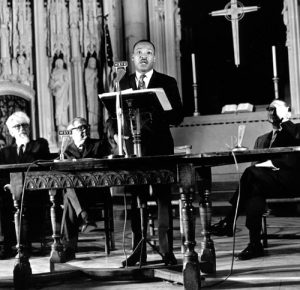 Exactly one year before his assassination in Memphis, King stood at one of the best-known pulpits in the nation, at Riverside Church in New York. There (as shown at right), he explained how he had come to connect the struggle for civil rights with the fight for economic justice and the early protests against the Vietnam War.
Exactly one year before his assassination in Memphis, King stood at one of the best-known pulpits in the nation, at Riverside Church in New York. There (as shown at right), he explained how he had come to connect the struggle for civil rights with the fight for economic justice and the early protests against the Vietnam War.
He proclaimed:“Now it should be incandescently clear that no one who has any concern for the integrity and life of America today can ignore the present war. If America’s soul becomes totally poisoned, part of the autopsy must read ‘Vietnam.’ It can never be saved so long as it destroys the hopes of men the world over.”
He angered crucial allies. King and President Lyndon Johnson, for example, had been allies in achieving significant legislative victories in 1964 and 1965. Johnson’s “Great Society” launched a series of initiatives to address issues of poverty at home. But beginning in 1965, after the Johnson administration increased the number of U.S. troops deployed in Vietnam, King’s vision grew radical.
King continued with a searching analysis of what linked poverty and violence both at home and abroad. While he had spoken out before about the effects of colonialism, he now made the connection unmistakably clear. He said: “I speak for those whose land is being laid waste, whose homes are being destroyed, whose culture is being subverted. I speak for the poor in America who are paying the double price of smashed hopes at home, and death and corruption in Vietnam.”
King concluded with the famous words on “the fierce urgency of now,” by which he emphasized the immediacy of the connection between economic injustice and racial inequality.
Washington Post, Retropolis: The Past, Rediscovered: In 1968, MLK was dead. Cities were burning. Could James Brown keep Boston from erupting, too? Terence McArdle, April 5, 2018 (7:28 min. WGBH video). Brown’s band feared for his safety. But Boston officials begged him to take the stage. James Brown’s televised concert in Boston a day after Martin Luther King Jr.’s assassination is credited with sparing the city the unrest seen elsewhere.
April 4
 JFK Facts, JFK Files Watch: With 22 days to go, these key files remain secret, Jefferson Morley, April 4, 2018. As President Trump’s April 26, 2018 deadline for full disclosure looms, key JFK files remain beyond public view. These files concern a subject the mainstream media coverage has shied from: the pre-assassination surveillance of accused assassin Lee Harvey Oswald from 1959 to 1963.
JFK Facts, JFK Files Watch: With 22 days to go, these key files remain secret, Jefferson Morley, April 4, 2018. As President Trump’s April 26, 2018 deadline for full disclosure looms, key JFK files remain beyond public view. These files concern a subject the mainstream media coverage has shied from: the pre-assassination surveillance of accused assassin Lee Harvey Oswald from 1959 to 1963.
 The files of four CIA officers who participated in the surveillance of Oswald have been released–but only in partial and redacted form. David Phillips, Birch O’Neal, George Joannides, and Ann Goodpasture, all deceased, were undercover operations officers who received reports on Oswald in the years, months, and weeks preceding JFK’s murder. After JFK was killed, they all obfuscated and concealed their knowledge of the man who was accused of killing Kennedy and denied it.
The files of four CIA officers who participated in the surveillance of Oswald have been released–but only in partial and redacted form. David Phillips, Birch O’Neal, George Joannides, and Ann Goodpasture, all deceased, were undercover operations officers who received reports on Oswald in the years, months, and weeks preceding JFK’s murder. After JFK was killed, they all obfuscated and concealed their knowledge of the man who was accused of killing Kennedy and denied it.
Phillips and Joannides broke the law by obstructing a Congressional investigation in the 1970s, according to Robert Blakey, general counsel of the House Select Committee on Assassinations, and Dan Hardway, an investigator. The partially released files of these four officers (viewable here, here, here and here) are still larded with white patches of deletions.
These redactions are a road map to the continuing JFK coverup. They obscure what the CIA wants to hide the most: the actions of certain counterintelligence and Cuban operations officers in late 1963.
 National Public Radio, 1968: How We Got Here: Conspiracy Theories About MLK’s Death Continue, But Investigators Say Case Is Closed, Mary Louise Kelly, host; Justice reporter Carrie Johnson (right) and Audrey McNamara (intern), April 4, 2018. Authorities have investigated the death of Martin Luther King Jr. five times since his murder in April 1968. Congress, district attorneys and the Justice Department have all concluded that James Earl Ray shot King as he stood on a motel balcony in Memphis, but conspiracy theories about who was responsible for his death continue to flourish.
National Public Radio, 1968: How We Got Here: Conspiracy Theories About MLK’s Death Continue, But Investigators Say Case Is Closed, Mary Louise Kelly, host; Justice reporter Carrie Johnson (right) and Audrey McNamara (intern), April 4, 2018. Authorities have investigated the death of Martin Luther King Jr. five times since his murder in April 1968. Congress, district attorneys and the Justice Department have all concluded that James Earl Ray shot King as he stood on a motel balcony in Memphis, but conspiracy theories about who was responsible for his death continue to flourish.
Justice Integrity Project editor’s note on story above: The column above demonstrates the continued once-over-lightly if not disinformation approach of the mainstream media to the topic of cause of death.
New York Times, Where Today’s Black Church Leaders Stand on Activism, John Eligon, April 4, 2018 (print edition). Fifty years after the assassination, black pastors are issuing a call to action and using different methods to achieve common goals.
Counterpoint Books, Killing King: Racial Terrorists, James Early Ray, and the Plot to Assassinate Martin Luther King Jr. by Stuart Wexler and Larry Hancock, April 4, 2018. A message from co-author Larry Hancock: Killing King represents some eight years of research on the conspiracy that actually assassinated MLK Jr. It represents brand new research, explores leads only superficially examined by the FBI, identifies new sources and new suspects and is unlike anything you have read previously (unless you read The Awful Grace of God).
This new edition takes our study much deeper, with new documents which were not available previously and most importantly with some new names and connections, especially in connection to the money behind the plot, where it was raised and how it was moved – and connecting those names to James Earl Ray. The book also deals with the reasons why this story has not emerged up to this point in time. Enough said, if you want to sample the book and get a feel for its direction, the first chapter is available for free viewing now, courtesy of CrimeReads. You can find it here.
JFKMoon.org, MLK 50 Years Later: Truth and Reconciliation, Mark Robinowitz, April 4, 20128. 50 years ago, on April 4, 1968, Martin Luther King, Jr. was murdered in Memphis. Now, MLK is a cultural icon, memorialized by the federal holiday, with schools and roads named in his honor. He is best known for his “I have a dream” speech at the 1963 March on Washington, but King’s legacy is far broader. In 1964, King was awarded the Nobel Peace Prize. He received this as a responsibility to do more.
 On April 4, 1967, at Riverside Church in New York City, he gave perhaps his most powerful speech, “Beyond Vietnam,” an indictment of what he called the “triple evils” of racism, militarism and poverty (as shown at right). Virtually the entire media attacked Dr. King for denouncing the war. Many of his allies ostracized him. Donations dropped to the Southern Christian Leadership Conference. He was never invited to the White House again.
On April 4, 1967, at Riverside Church in New York City, he gave perhaps his most powerful speech, “Beyond Vietnam,” an indictment of what he called the “triple evils” of racism, militarism and poverty (as shown at right). Virtually the entire media attacked Dr. King for denouncing the war. Many of his allies ostracized him. Donations dropped to the Southern Christian Leadership Conference. He was never invited to the White House again.
In a 2016 article for Sojourners magazine, Rabbi Arthur Waskow recalled that King’s “friend and co-worker Rabbi Abraham Joshua Heschel was heard to mutter than by giving this profoundly radical speech he had signed his death warrant — and indeed, exactly one year later, he was murdered.”
When King was killed, he had been organizing the “Poor People’s Campaign,” a second March on Washington. The plan was to camp on the National Mall by the US Capitol to demand the government address poverty (not only African Americans). Federal government leaders saw this as a dangerous threat. They feared MLK would not be able to keep the protest non-violent, especially after their demands were not met.
The official narrative of King’s assassination is that he was killed by James Earl Ray, supposedly a lone racist motivated by hate. King had received countless racist threats, but racism was not the only reason he was killed.
After some years, the King family suspected that James Earl Ray, the accused killer, was not the murderer. They asked their friend, attorney William Pepper, to investigate. Pepper had helped persuade King to speak out more against the war on Vietnam, and toward the end of Ray’s life, became Ray’s attorney.
Ray never had a trial. He was coerced into pleading guilty to avoid the electric chair — and spent the rest of his life trying to withdraw that plea. The King family eventually supported Ray’s (unsuccessful) effort for a trial.
Ray died in prison in 1998. In 1999, the family filed a suit against Loyd Jowers and “other unknown co-conspirators.” Jowers owned the rooming house next to the Lorraine Motel where King was shot. He had admitted, in a public interview and in talks with Dexter King and Andrew Young, to have hidden the rifle that was used; fired, he said, by a Memphis police sharpshooter.
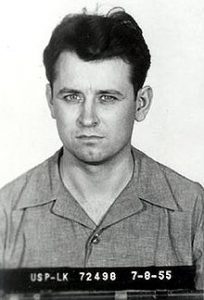 One piece of evidence that Ray (shown in a 1955 mug shot) was framed: several eyewitnesses said the shot was fired from bushes outside the rooming house. (Ray supposedly shot MLK from inside the building.). The next day, the City of Memphis cut down the bushes.
One piece of evidence that Ray (shown in a 1955 mug shot) was framed: several eyewitnesses said the shot was fired from bushes outside the rooming house. (Ray supposedly shot MLK from inside the building.). The next day, the City of Memphis cut down the bushes.
While Ray was a fugitive in Canada, he used multiple identities for actual people who superficially resembled him, a feat that required access to centralized government databases.
King v. Jowers did not seek to prosecute or punish anyone, but to use the legal system to expose the truth. (They only asked for a symbolic fine of $100 and no jail time.) The family was inspired by the “Truth and Reconciliation” process pioneered in South Africa after Apartheid, which gave amnesty for politically motivated crimes if the perpetrators were willing to confess in public. The jury heard three weeks of testimony and took one hour to reach a verdict: elements in the federal and local governments conspired with organized crime to kill King.
The family said the trial was “everything that the family members have to say about the assassination.” They said they “have done our part [and] those of you, if you find it in your hearts to get the ‘powers that be’ to officialize what 12 independent people have already done, that is your business.” Since then, there has not been a groundswell to highlight the implications for civil rights, issues of peace and war, and the contrast of poverty in the wealthiest nation in history.
Truth and Reconciliation applies not only to the perpetrators who ordered this and similar crimes of state, but also to the citizenry who have been hesitant to admit unpleasant parts of our history. The King family’s message of love and reconciliation could free our society from fear and divisiveness to reach our positive potentials.
Mark Robinowitz publishes www.JFKMoon.org, about President Kennedy’s 1963 effort to end the Cold War and convert the Moon race to a joint US – Soviet mission. He will present a paper on “Truth and Reconciliation for the National Insecurity State” at “Of Kennedys and Kings: Reinvestigating the RFK and MLK assassinations at 50.” Details at www.duq.edu/rfkmlk.
New York Times, The Lone Journalist on the Scene When King Was Shot and the Newsroom He Rallied, Staff report, April 3, 2018. Earl Caldwell wrote history on the night of April 4, 1968, when he reported firsthand on the assassination of Martin Luther King Jr. for The New York Times. But he made history right before that, when he became the first black reporter The Times had assigned to follow the civil rights leader.
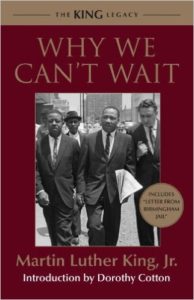 That night, Caldwell spearheaded the dozens of reporters, editors and photographers hastily assembled for the story — an additional first for a black journalist and, in a larger sense, another result of the campaign for greater black inclusion in American life that King had come to personify over the previous 13 years.
That night, Caldwell spearheaded the dozens of reporters, editors and photographers hastily assembled for the story — an additional first for a black journalist and, in a larger sense, another result of the campaign for greater black inclusion in American life that King had come to personify over the previous 13 years.
The milestones in King’s career — the Montgomery bus boycott, the protests in Birmingham, the marches on Washington and from Selma to Montgomery — had always been the province of white correspondents, principally native Southerners (Claude Sitton, Roy Reed, Gene Roberts and John Herbers, among them) steeped in racial matters for whom the major stops on the civil rights itinerary represented home turf. But that changed when King, in Memphis to support striking local sanitation workers, and Caldwell, there to follow him around, each checked into the Lorraine Motel on April 3.
April 2
New York Times, Television: Seeing Martin Luther King Jr. in a New Light, Salamishah Tillet, April 2, 2018 (print edition). The Rev. Dr. Martin Luther King Jr., more than most civil rights leaders, understood the singular role that television played in documenting the brutality of racial violence on African-Americans and eliciting sympathy from white viewers.
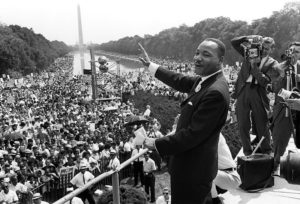 As three new television documentaries marking the 50th anniversary of his assassination show, King embraced prime time news television coverage as a matter of political strategy and survival through his savvy use of sound bites, well-timed protests and the practice of nonviolence in the face of abuse.
As three new television documentaries marking the 50th anniversary of his assassination show, King embraced prime time news television coverage as a matter of political strategy and survival through his savvy use of sound bites, well-timed protests and the practice of nonviolence in the face of abuse.
These documentaries share much in common. They feature some familiar civil rights voices, most notably those of Student Nonviolent Coordinating Committee activists John Lewis and Diane Nash, and reveal how King’s relationships with the news media and the movement waned dramatically in his final years. And they attempt to present a more radical version of King to a new generation of viewers, with varying degrees of success.
“Hope & Fury: MLK, the Movement and the Media,” which aired on NBC in late March and returns on MSNBC on April 1, is a two-hour documentary about the strained yet symbiotic relationship between civil rights activists and the emergent nightly television news. “We felt there was so much hagiography of the movement and a flattening of the characters into a one-dimensional portrait,” said Rachel Dretzin, a producer and co-director; Andrew Lack, chairman of NBC News and MSNBC, is executive producer. “The decision to focus on the political savvy and the sophistication of King and other leaders of the movement ended up making it much more dimensional and interesting to us.”In the NBC documentary “Hope & Fury: MLK, the Movement and the Media,” students are hit by a water hose during a peaceful walk in Birmingham, Ala., on May 3, 1963.
Opening with Andrew Young’s declaration that “one of the reasons Martin Luther King was so successful was that he understood television,” “Hope & Fury” begins with the invisibility of black life and racial suffering on American television before the 1957 coverage of the black students who desegregated Central High School in Little Rock, Ark. Before, it was black newspapers like The Baltimore Afro-American and The Chicago Defender that provided comprehensive reporting on African-Americans. The film reminds us that television images of federal troops protecting brave and innocent black youth from white protesters was new for white Americans and helped spark people’s consciences.
“Hope & Fury” largely relies on archival footage and commentary from former civil rights activists and historians as well as journalists both veteran (Tom Brokaw, Dan Rather, Moses Newson) and contemporary (Nikole Hannah-Jones of The New York Times and Chris Hayes and Joy-Ann Reid of MSNBC). And while an intense focus on the importance of television by a major news network risks veering toward the self-congratulatory, the film’s strength lies in its acknowledgment of a singular debt, not just to King, but to an ensemble of civil rights leaders. “Hope & Fury” is careful to show that it was the momentum of the civil rights movement that helped increase the audience of evening news, expand its format and enshrine its authority.
 The NBC news anchor Lester Holt in “Hope & Fury,” which examines the strained yet symbiotic relationship between civil rights activists and the emergent nightly television news.
The NBC news anchor Lester Holt in “Hope & Fury,” which examines the strained yet symbiotic relationship between civil rights activists and the emergent nightly television news.
On April 4 on the Paramount Network, “I Am MLK Jr.” will showcase the highlights of King’s activism, including the Montgomery Bus Boycott and the March on Washington. Directed by John Barbisan and Michael Hamilton, the documentary features older civil rights leaders like Jesse Jackson, contemporary media personalities like Van Jones and celebrities like Nick Cannon. An interview with Shaun King, a key figure in Black Lives Matter, is the film’s most obvious nod to how King’s activism has inspired action today. But, with the notable exception of Ms. Nash and a few others including her fellow SNCC member Rutha Mae Harris, the largely patrilineal tradition of black activism portrayed here overlooks those girls and women of color who have long been at the forefront of social justice movements.
Turning to the final chapters of King’s life, HBO’s “King in the Wilderness,” airing on April 2, presents an image of King that might be familiar to academics and leftist activists but unrecognizable to many Americans. The filmmakers pulled hundreds of news accounts from 1968-2014 about King, said Peter Kunhardt, the director. In most, he said, “the reporter would summarize him with the ‘I Have a Dream’ speech.” He went on, “It never went beyond that. So we were pleased to not deal with that aspect and look at the nightmare the dream turned into.”
April 1
Washington Post, This black photographer befriended rights leaders and fed info on them to the FBI, Book Review: A Spy in Canaan: How the FBI Used a Famous Photographer To Infiltrate the Civil Rights Movement by Marc Perrusquia (Melville House)] by Aram Goudsouzian, April 1, 2018 (print edition). Aram Goudsouzian is the author of “Down to the Crossroads: Civil  Rights, Black Power, and the Meredith March Against Fear” and the co-editor, with Charles McKinney, of “An Unseen Light: Struggles for Black Freedom in Memphis, Tennessee.”
Rights, Black Power, and the Meredith March Against Fear” and the co-editor, with Charles McKinney, of “An Unseen Light: Struggles for Black Freedom in Memphis, Tennessee.”
You know the photograph [shown at left on the cover of the new book A Spy In Canaan]. It is from 1968, one week before the assassination of Martin Luther King Jr. A sea of signs, proclaiming “I AM A MAN.” A sharp line of black sanitation workers, ready to march through Memphis. A purse-wielding woman in the left foreground, and a slim man walking across the line, gazing right at the camera.
The man behind the camera was Ernest Withers. Besides that iconic photograph, he supplied scores of images that shape our memory of the civil rights movement. He captured the dramatic moment in a Mississippi courtroom when Moses Wright identified the abductor of his great-nephew Emmett Till. He snapped the perfect shot of King staring balefully out a window while integrating a bus in Montgomery. He photographed the Freedom Rides, the funeral of Medgar Evers and James Meredith’s March Against Fear.
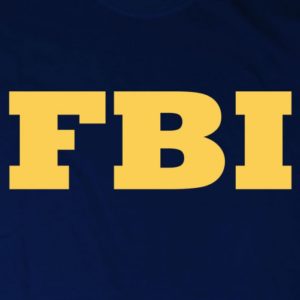 Withers was also a paid informant for the FBI. That news broke in September 2010, after the Memphis Commercial Appeal published a report by Marc Perrusquia. The reporter (shown at left) had exploited a clerical error to learn that Withers had supplied information to FBI agents from at least 1968 to 1970.
Withers was also a paid informant for the FBI. That news broke in September 2010, after the Memphis Commercial Appeal published a report by Marc Perrusquia. The reporter (shown at left) had exploited a clerical error to learn that Withers had supplied information to FBI agents from at least 1968 to 1970.
 That bombshell raised as many questions as it answered. What was Withers’s exact role? When did it begin and end? What was its impact? Most important, why? Why did this great black photographer spy on a movement for black freedom?
That bombshell raised as many questions as it answered. What was Withers’s exact role? When did it begin and end? What was its impact? Most important, why? Why did this great black photographer spy on a movement for black freedom?
Perrusquia’s new book, A Spy in Canaan, fleshes out critical details in the Withers saga. It is a triumph of investigative reporting, the product of the author’s dogged research and a bold lawsuit backed by the Commercial Appeal. It also stirs an appetite for a richer history of the civil rights movement, though it cannot satisfy that hunger.
Wikipedia: Ernest C. Withers (August 7, 1922 – October 15, 2007) was an American photojournalist. He is best known for capturing over 60 years of African American history in the segregated South, with iconic images of the Montgomery Bus Boycott, Emmett Till, Sanitation Worker’s Strike, Negro league baseball, and musicians including those related to Memphis blues and Memphis soul.
March
March 30
Washington Post, Who killed Martin Luther King Jr.? His family believes James Earl Ray was framed, Tom Jackman, March 30, 2018. In the five decades since Martin Luther King Jr. was shot dead by an assassin at age 39, his children have worked tirelessly to preserve his legacy, sometimes with sharply different views on how best to do that. But they are unanimous on one key point: James Earl Ray did not kill Martin Luther King.
For the King family and others in the civil rights movement, the FBI’s obsession with King in the years leading up to his slaying in Memphis on April 4, 1968 — pervasive surveillance, a malicious disinformation campaign and open denunciations by FBI director J. Edgar Hoover — laid the groundwork for their belief that he was the target of a plot.
“It pains my heart,” said Bernice King, 55, the youngest of Martin Luther King’s four children and the executive director of the King Center in Atlanta, “that James Earl Ray had to spend his life in prison paying for things he didn’t do.”
Until her own death in 2006, Coretta Scott King, who endured the FBI’s campaign to discredit her husband, was open in her belief that a conspiracy led to the assassination. Her family filed a civil suit in 1999 to force more information into the public eye, and a Memphis jury ruled that the local, state and federal governments were liable for King’s death. The full transcript of the trial remains posted on the King Center’s website.
“There is abundant evidence,” Coretta King said after the verdict, “of a major, high-level conspiracy in the assassination of my husband.” The jury found the mafia and various government agencies “were deeply involved in the assassination. … Mr. Ray was set up to take the blame.”
But nothing changed afterward. No vast sums of money were awarded (the Kings sought only $100), and Ray was not exonerated.
King’s two other surviving children, Dexter, 57, and Martin III, 60, fully agree that Ray was innocent. And their view of the case is shared by other respected black leaders.
“I think there was a major conspiracy to remove Dr. King from the American scene,” said Rep. John Lewis (D-Ga.), a 78-year-old civil rights icon (shown at left). “I don’t know what happened, but the truth of what happened to Dr. King should be made available for history’s sake.”
 Andrew Young, the former U.N. ambassador and Atlanta mayor who was at the Lorraine Motel with King when he was shot there, agrees. “I would not accept the fact that James Earl Ray pulled the trigger, and that’s all that matters,” said Young, who noted that King’s death came after the killings of John F. Kennedy and Malcolm X and just months before the slaying of Robert F. Kennedy.
Andrew Young, the former U.N. ambassador and Atlanta mayor who was at the Lorraine Motel with King when he was shot there, agrees. “I would not accept the fact that James Earl Ray pulled the trigger, and that’s all that matters,” said Young, who noted that King’s death came after the killings of John F. Kennedy and Malcolm X and just months before the slaying of Robert F. Kennedy.
Astride all this controversy for the last 40 years has been William Pepper, a New York lawyer and civil rights activist who knew and worked with King. Pepper first visited Ray in prison in 1978 along with Ralph Abernathy, one of King’s closest associates. Pepper became convinced of Ray’s innocence and continued to investigate the case even after Ray died.
Pepper wrote three books outlining the conspiracy, most recently The Plot to Kill King in 2016, which were largely ignored by the media.
He defended Ray in a mock trial on HBO in 1993 (Ray was found not guilty), and filed and tried the Memphis civil suit that found the government liable for King’s death.
March 20
 USA Today, JFK files: 15-year lawsuit over mysterious CIA agent drags as final files await release, Ed Brackett, March 20, 2018 (print edition). For 15 years, journalist, author and assassination expert Jefferson Morley (right) has fought to compel the CIA to produce records about longtime spy George Joannides, who worked with a group associated with President John F. Kennedy’s acknowledged assassin and then aided the committee that tried to investigate that killing.
USA Today, JFK files: 15-year lawsuit over mysterious CIA agent drags as final files await release, Ed Brackett, March 20, 2018 (print edition). For 15 years, journalist, author and assassination expert Jefferson Morley (right) has fought to compel the CIA to produce records about longtime spy George Joannides, who worked with a group associated with President John F. Kennedy’s acknowledged assassin and then aided the committee that tried to investigate that killing.
Morley returned to federal court again Monday, this time before a three-judge appeals court panel to get the government to pay legal fees that have climbed to more than $500,000, said Morley’s attorney, James Lesar.
Circumstances around Kennedy’s murder and the various theories over the decades that reject the idea that the lone assassin was Oswald — who himself was murdered during a jail transfer two days after Kennedy was killed — can get pretty complicated.
Morley, however, says his case is simple: The government needs to inform the public of its activities. Morley wants the appeals court in Washington to force the government to pay his legal fees and to get the CIA to reveal some of Joannides’ records.
“We’re talking about very specific things. We are not talking about a Chinese box,” he said in response to a question mentioning the term.
Bill Miller, public information officer of the Washington U.S. Attorney’s office, said the office had no comment on the case beyond its court motions and filings.
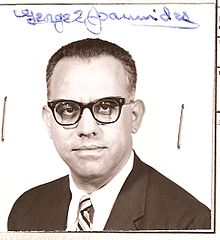 As more and more government files have been released under the JFK Records Act since October, various long-held CIA secrets have been revealed, many of them not related to the assassination, at least directly. But even with the court case and the Records Act — with its final production due in April — files on Joannides (shown at left) remain scarce.
As more and more government files have been released under the JFK Records Act since October, various long-held CIA secrets have been revealed, many of them not related to the assassination, at least directly. But even with the court case and the Records Act — with its final production due in April — files on Joannides (shown at left) remain scarce.
In 1963, the year Kennedy was murdered, Joannides was the CIA case officer over students from Cuba eager to oust dictator Fidel Castro, who had seized power in 1959. In 1978, Joannides was named by the CIA as its contact with the House Select Committee on Assassinations.
March 16
Justice Integrity Project, DC ‘Big Event’ Boosts Pressure To Disclose Suppressed JFK Records, Andrew Kreig, March 16, 2018. Nearly a score of conference speakers last weekend presented powerful evidence of a conspiracy to assassinate President John F. Kennedy in 1963 and to maintain a cover-up that exists to the present.
Speakers documented again and again how a massive cover-up that began immediately after the president’s death has continued despite a unanimous congressional vote in 1992 on the so-called “JFK Act” that required release of all relevant documents by a deadline of last October.
Co-keynoter Dr. Cyril H. Wecht, M.D., J.D., drew on six decades of medical training and practice to denounce yet again what he described as scientifically impossible official findings of the 1964 Warren Commission.
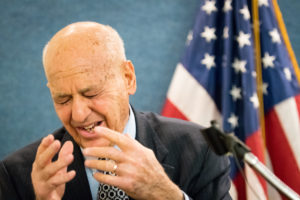 The Commission and its supporters claim that Lee Harvey Oswald was a lone assassin who killed Kennedy by firing three shots from the sixth floor of an office building located behind the president during a motorcade through downtown Dallas.
The Commission and its supporters claim that Lee Harvey Oswald was a lone assassin who killed Kennedy by firing three shots from the sixth floor of an office building located behind the president during a motorcade through downtown Dallas.
CAPA’s Chairman Wecht, an eminent forensic pathologist, medical school professor, author and former coroner portrayed above right in a file photo by Noel St. John at the National Press Club, showed that extensive scientific evidence as well as common sense indicate that Oswald (shown in a passport photo below left) could not have fired the fatal shot and wounding Texas Gov. John Connolly in several places with the same bullet — and so there must have been a conspiracy.
“What the hell is the problem?” Wecht said of efforts by the CIA and other federal officials to suppress in violation of the 1992 law relevant witness, medical and other records. “Just put the goddamn stuff out there!”
Concurring in that view was co-keynoter Roger Stone, the noted political operative and best-selling author of a book arguing that Kennedy’s successor Lyndon Johnson orchestrated the murder and a cover-up.
In testimony before the Warren Commission, created to investigate the assassination of JFK, Paine said he did not regard Oswald as someone likely to kill a president. “I saw he was a bitter person … very little charity in his view toward anybody, but I thought he was harmless,” he told the commission.Through much of the 55 years since JFK’s murder, some conspiracy narratives have alleged that both Paine and his former wife, Santa Rosa resident Ruth Paine, were CIA operatives and framed Oswald.
Both rejected the scenario as ridiculous, declaring that their observations and knowledge of Oswald persuaded them that the killing of Kennedy was the work of him alone. Michael Paine told an interviewer not long after the shooting, “I think it’s a lone wolf thing. The opportunity presented itself to him and he probably wanted to make a mark on society.”
Paine died March 1 in Sebastopol, where he had lived with or near his son the past 14 years. He was 89. Michael Paine studied at Harvard and Swarthmore and was living in Pennsylvania when, in 1957, he married Ruth Avery Hyde. Two years later, Michael Paine took a job with Bell Helicopter that required a relocation to Texas. The couple settled in Irving, a suburb of Dallas. They had two children, Tamarin and Chris, when they separated amicably in the fall of 1962, then continued to spend time together as a family.
 The children lived with Ruth Paine (shown at right), a Quaker who has said she studied the Russian language in order to counter Cold War tensions by seeking out dialogue with Russian people. In February 1963, she heard of a Russian woman who spoke no English, having recently moved to the U.S. with her young daughter and her husband, Lee Harvey Oswald. Ruth, now a retired teacher and school counselor living in Rincon Valley, has said she liked the idea of having someone with whom to practice her Russian. So she reached out to the Oswalds. She invited her ex-husband, too, when she had 21-year-old Marina and Lee Oswald, 23, and baby June over for dinner. Ruth and Marina became friends.
The children lived with Ruth Paine (shown at right), a Quaker who has said she studied the Russian language in order to counter Cold War tensions by seeking out dialogue with Russian people. In February 1963, she heard of a Russian woman who spoke no English, having recently moved to the U.S. with her young daughter and her husband, Lee Harvey Oswald. Ruth, now a retired teacher and school counselor living in Rincon Valley, has said she liked the idea of having someone with whom to practice her Russian. So she reached out to the Oswalds. She invited her ex-husband, too, when she had 21-year-old Marina and Lee Oswald, 23, and baby June over for dinner. Ruth and Marina became friends.
That friendship on occasion brought Michael Paine and Lee Oswald together, and three or four times they engaged in political discussions. Paine, a liberal and longtime member of the American Civil Liberties Union, would later describe Oswald as a “pipsqueak,” but one whose politics he tried to understand.“He told me he became a Marxist in this country by reading books and without having ever having met a communist,” Paine said in an interview following the assassination.
“With me he spoke very freely and he complained that with other people he couldn’t … they wouldn’t talk about political subjects. He would talk about nothing else.”
In interviews and in testimony before the Warren Commission, Paine described Oswald as a lonely man who seemed to like very few people. But in their conversations Oswald never revealed hostility toward Kennedy. “I expressed my appreciation of President Kennedy and he didn’t ever argue with me on that point,” Paine said in an interview. In a 2013 essay he titled, “My Experience with Lee Harvey Oswald,” Paine recalled that Oswald once declared emphatically that “change only comes through violence.”
“I’d also heard him say that President Kennedy was the best president he had in his lifetime. Looking back on what happened, these two statements seem impossibly contradictory … how could a man want to kill a president whom he thought was the best president he’d had in his lifetime?” Though Michael Paine remained no more than an acquaintance to the Oswalds, Ruth took Marina Oswald under her wing and tried to be helpful to her struggling family.
Ruth, who became a key witness to the Warren Commission, has said she was hoping to bring a degree of stability to the Oswalds when, in the fall of 1963, she told Lee Oswald about a job opening she’d heard of — at the Texas School Book Depository in Dallas.
Editor’s Note from Justice Integrity Project: Independent researchers have repeatedly challenged statements by the Paines and those who popularize the saga of the Paines’ religiosity and other innocence, as in the above obituary.
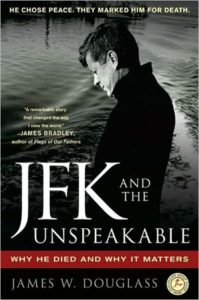 Author James Douglass wrote in JFK and the Unspeakable: Why He Died & Why It Matters (2009), for example, that the Paines and their family were heavily involved in the military-intelligence sector and functioned in effect as CIA “handlers” for Oswald after his previous CIA handler, George de Mohrenschildt, moved on to receive a payoff of lucrative oil engineering contracts involving Haiti. Douglass wrote also that Ruth Paine’s father received a three-year contract from the heavily CIA-infiltrated U.S. Agency for International Development in October 1964 to supervise AID’s insurance programs in Latin America. The contract was shortly after release of release of the Warren Report and provided a job giving the CIA, under AID cover, a thorough look into business practices in Latin America.
Author James Douglass wrote in JFK and the Unspeakable: Why He Died & Why It Matters (2009), for example, that the Paines and their family were heavily involved in the military-intelligence sector and functioned in effect as CIA “handlers” for Oswald after his previous CIA handler, George de Mohrenschildt, moved on to receive a payoff of lucrative oil engineering contracts involving Haiti. Douglass wrote also that Ruth Paine’s father received a three-year contract from the heavily CIA-infiltrated U.S. Agency for International Development in October 1964 to supervise AID’s insurance programs in Latin America. The contract was shortly after release of release of the Warren Report and provided a job giving the CIA, under AID cover, a thorough look into business practices in Latin America.
Separately, the Paines’ religious, military, CIA and Oswald relationships were described extensively in A Certain Arrogance: The Sacrificing of Lee Harvey Oswald and the Cold War Manipulation of Religious Groups by U.S. Intelligence, published by TrineDay in 2011. The book by University of Hartford Professor George Michael Evica showed that the Paine family’s Quaker-Unitarian and intelligence ties and such other factors as Oswald’s little-known acceptance to Albert Schweitzer College (a soon-to-be defunct Unitarian operation described as a CIA front in Switzerland) suggested strong likelihood that the Paines used their religious appearance to help frame Oswald.
The professor concluded via his in-depth research: “Unitarian individuals and groups connected to the accused assassin were linked to significant U.S. intelligence actions throughout the Cold War.” He continued on page 304 of his book:
“After the JFK assassination, a persistent and honest inquiry by the FBI, the CIA, the Warren Commission, and subsequent investigations would have discovered all of them. But an honest inquiry would have exposed also U.S. Intelligence’s manipulation of religious individuals and groups, including the Quakers, the Unitarians and especially Albert Schweitzer College. An honest inquiry would also have asked whether Lee Oswald was deliberately steered tgoward a Swiss college that had such U.S. Intelligence ties, and why. Nothing of the sort was ever initiated in the official investigations of the assassination of John F. Kennedy (Emphasis added).”
March 14
 JFK Facts.org, Opinion: CIA to argue JFK lawsuit disclosures have no ‘public benefit,’ Jefferson Morley (shown at right), March 14, 2018. On Monday March 19, a three-judge federal appellate court in Washington, D.C. will hear oral arguments about the “public benefit” of disclosure of CIA files related to the assassination of President Kennedy.
JFK Facts.org, Opinion: CIA to argue JFK lawsuit disclosures have no ‘public benefit,’ Jefferson Morley (shown at right), March 14, 2018. On Monday March 19, a three-judge federal appellate court in Washington, D.C. will hear oral arguments about the “public benefit” of disclosure of CIA files related to the assassination of President Kennedy.
With the release of the last of the U.S. government’s JFK assassination files set for April 26, 2018, the judges have to pass judgement on a still-timely question: is there any public benefit from learning more about the events of November 1963?
I say yes. A lot of news organizations have agreed with me. In the past 10 years, the New York Times, Fox News, Boston Globe, Politico, and Associated Press have all written about Morley v. CIA, and its revelations.
The lawsuit, Morley v. CIA, obtained several hundred pages from the files of deceased CIA officer George Joannides. The new material included:
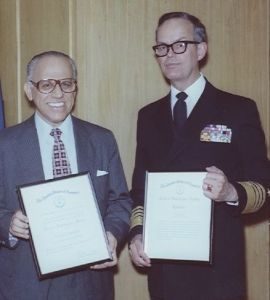 – a photograph showing that Joannides received a CIA medal in July 1981 (as indicated in an adjoining CIA photo, with Joannides on the left). That was three years after he had stonewalled Dan Hardway and other congressional investigators about what he knew of contacts between accused assassin Lee Harvey Oswald and his agents in a CIA political action/propaganda program known by the code name AMSPELL. While it was been known since 2001 that Joannides played a curious, if not suspicious, role in the JFK story, Morley v. CIA revealed he had received a CIA commendation for his actions.
– a photograph showing that Joannides received a CIA medal in July 1981 (as indicated in an adjoining CIA photo, with Joannides on the left). That was three years after he had stonewalled Dan Hardway and other congressional investigators about what he knew of contacts between accused assassin Lee Harvey Oswald and his agents in a CIA political action/propaganda program known by the code name AMSPELL. While it was been known since 2001 that Joannides played a curious, if not suspicious, role in the JFK story, Morley v. CIA revealed he had received a CIA commendation for his actions.
– Two memos indicating that Joannides maintained a residence in New Orleans during his stint as the Miami-based chief of the agency’s psychological warfare operations in 1962-64. Joannides’ role in funding the anti-Castro Cuban Student Directorate, (AMSPELL), at the time the group had contact with accused assassin Lee Harvey Oswald was previously known. Morley v. CIA revealed that Joannides travelled at least twice to New Orleans where the Oswald-AMSPELL encounters took place. AMSPELL is still a very sensitive topic. The CIA partially released an 86 page AMSPELL file last fall; all but 24 pages were redacted.
– A CIA memo stated that when Joannides acted as CIA liaison to the House Select Committee on Assassinations in 1978, he served in an “undercover” role. Until Morley v. CIA no one knew that the CIA had assigned an officer to an “undercover” role in a JFK investigation.
– A so-called Vaughn Index listing scores of still-classified CIA records about Joannides’ actions, including a September 1978 evaluation of his job performance when he was stonewalling the House Select Committee on Assassinations. Dan Hardway, West Virginia attorney and former HSCA investigator, has explained how Joannides thwarted the HSCA investigation.
In sum, the lawsuit revealed that Joannides was rewarded for obstructing the investigation of the death of President Kennedy and that the CIA is still concealing information about his JFK-related activities in 1963 and 1978.
 JFKFacts.org, Roger Stone’s valid JFK point: CIA is not complying with the law, Jefferson Morley, March 12, 2018. As we approach President Trump’s April 26, 2018 deadline for release of the last of the government’s JFK files, Roger Stone makes a legally valid point: The CIA is not obeying the JFK Records Act.
JFKFacts.org, Roger Stone’s valid JFK point: CIA is not complying with the law, Jefferson Morley, March 12, 2018. As we approach President Trump’s April 26, 2018 deadline for release of the last of the government’s JFK files, Roger Stone makes a legally valid point: The CIA is not obeying the JFK Records Act.
Stone pointed out that the 1992 law which required the JFK documents be released also required the agency redacting records to justify their redactions in writing and that those explanations be published in the Federal Register.
Stone is referring to a specific passage in the JFK Records Act, Section 4 (g) (2) (B), which states “All postponed assassination records determined to require continued postponement shall require an unclassified written description of the reason for such continued postponement. Such description shall be provided to the Archivist and published in the Federal Register upon determination.”
From the passage of the law in 1992 until 2017, the CIA and other agencies adhered to this passage, and did so scrupulously. If the CIA released a JFK file to the National Archives with redactions, a coded comment in the margin gave an unclassified description of why information was withheld. Typical reasons were “national security,” “personal privacy” or “sources and methods.”
February
Feb. 22
 Future of Freedom Foundation, Disappointment Over Tyler Cowen’s Take on the JFK Assassination, Jacob G. Hornberger (foundation president, book publisher and attorney shown at right), Feb. 22, 2018. Anyone familiar with Tyler Cowen knows that he has been blessed with a brilliant and analytical mind. Such being the case, I was particularly interested in reading his Bloomberg article “How to Test Your Favorite Conspiracy Theory,” at least insofar as it related to the assassination of President John Kennedy. I wanted to see how Cowen applied his legendary analytical skills to that seminal event in U.S. history.
Future of Freedom Foundation, Disappointment Over Tyler Cowen’s Take on the JFK Assassination, Jacob G. Hornberger (foundation president, book publisher and attorney shown at right), Feb. 22, 2018. Anyone familiar with Tyler Cowen knows that he has been blessed with a brilliant and analytical mind. Such being the case, I was particularly interested in reading his Bloomberg article “How to Test Your Favorite Conspiracy Theory,” at least insofar as it related to the assassination of President John Kennedy. I wanted to see how Cowen applied his legendary analytical skills to that seminal event in U.S. history.
Alas, after reading the article, I was left with nothing but disappointment.
Mind you, the article wasn’t only about the JFK assassination. It also encompassed other subjects, like UFOs, the Malaysian Airliner crash, insider trading, baseball scandals, the moon walk, and Paul McCartney.
Nonetheless, Cowen’s comments on the JFK assassination was fascinating, revealing, and, well, disappointing. Here is what he writes:
I am inclined to think (although not certain) that Lee Harvey Oswald acted alone…. Another way to search for true conspiracies is to scour history for deathbed confessions. Did any Cuban or Soviet agents, shortly before dying, blurt out that they knew the true story of President John Kennedy’s assassination? As far as I know, these admissions are hard to come by. That’s another reason for not believing in most conspiracy theories.”
That is a fascinating — and revealing — insight into Cowen’s perspective on the JFK assassination. Notice that Cowen’s mindset leads to but two possibilities: Oswald did it alone. Or Oswald conspired with others.
Who would those “others” be? Why, Soviet or Cuban agents of course. That’s why Cowen refers to the absence of deathbed confessions from Soviet or Cuban agents. He is suggesting that if Oswald didn’t act alone, then his co-conspirators had to have been Soviet or Cuban communists.
Why is that? Cowen is alluding to the official story: Oswald was supposedly a devout communist, one who had traveled to Moscow, attempted to defect to the Soviet Union (i.e., Russia), vowed to give the Reds all the information he had acquired as U.S. Marine, returned to the United States with a Russian wife, distributed pamphlets in New Orleans for the Fair Play for Cuba Committee, and traveled to Mexico City, where he purportedly visited the Soviet and Cuban embassies shortly before the assassination.
Thus, all that obviously leads Cowen to conclude that there are but two possibilities: Oswald acted alone or Oswald conspired with the Reds to kill Kennedy. Since no deathbed confessions have popped up among Soviet and Cuban agents, Cowen tends toward the lone-nut theory.
What is disappointing is that Cowen apparently fails to consider a third possibility: that Oswald was entirely innocent — that is, that he didn’t kill Kennedy, either alone or in concert with anyone.
Feb. 6
 JFKFacts.org, Opinion: I’ll be in federal court on March 19 talking about certain JFK files that the CIA would really prefer you not think about, Jefferson Morley, Feb. 6, 2018. Author, reporter and JFKFacts.org editor Jefferson Morley is shown at right. On Monday morning March 19 my attorneys Jim Lesar and Dan Alcorn and I will appear at the Barrett Prettyman federal courthouse in Washington for oral arguments in my long-running lawsuit, Morley v. CIA.
JFKFacts.org, Opinion: I’ll be in federal court on March 19 talking about certain JFK files that the CIA would really prefer you not think about, Jefferson Morley, Feb. 6, 2018. Author, reporter and JFKFacts.org editor Jefferson Morley is shown at right. On Monday morning March 19 my attorneys Jim Lesar and Dan Alcorn and I will appear at the Barrett Prettyman federal courthouse in Washington for oral arguments in my long-running lawsuit, Morley v. CIA.
The issue before the three-judge panel: has there been a “public benefit” from the lawsuit’s disclosure of long-secret documents about deceased CIA officer George Joannides? Lesar will make the common sense case that widespread media interest in Morley v. CIA is proof of public benefit. The editors of the New York Times, Fox News, the San Diego Union, St. Paul Pioneer Press, CBS News in Dallas, and the New Yorker, among many other news organizations have seen fit to report on Morley v. CIA.
 Retired CIA officer George Joannides (left in a CIA photo) received the Career Intelligence Medal in 1981, two years after misleading House investigators about what he knew about Lee Oswald. The Times, the Daily Mail, and a dozen other news sites published a photo of Joannides receiving a CIA medal after he stonewalled congressional investigators about what he knew about the Cuban contacts of accused assassin Lee Harvey Oswald.
Retired CIA officer George Joannides (left in a CIA photo) received the Career Intelligence Medal in 1981, two years after misleading House investigators about what he knew about Lee Oswald. The Times, the Daily Mail, and a dozen other news sites published a photo of Joannides receiving a CIA medal after he stonewalled congressional investigators about what he knew about the Cuban contacts of accused assassin Lee Harvey Oswald.
What’s New? Joannides’ curious, if not suspicious, role in the JFK story was utterly unknown before I filed my lawsuit. My argument: greater knowledge about the JFK story is benefits the public.
The CIA wants their day in court too: Benton Peterson, a Trump Justice Department attorney, representing the agency, will argue that there has been no “public benefit” from the information obtained under Morley v. CIA. The CIA, he will say, should not have to pay my court costs for 15 years of successful litigation.
 The CIA’s argument is revealing. The agency has been fighting my request for Joannides’ files since I sued in December 2003, They want to say publicly: Pay no attention to the story of George Joannides. They also want to say: And pay no attention to this Morley character. He’s a schemer who filed this lawsuit to get the government to pay the copying costs of his research. (The Obama Justice Department actually made this argument at one point.)
The CIA’s argument is revealing. The agency has been fighting my request for Joannides’ files since I sued in December 2003, They want to say publicly: Pay no attention to the story of George Joannides. They also want to say: And pay no attention to this Morley character. He’s a schemer who filed this lawsuit to get the government to pay the copying costs of his research. (The Obama Justice Department actually made this argument at one point.)
The CIA needs their day in court for purposes of JFK damage control. They need to assure the public and the courts there is no benefit from studying the story of Joannides, a CIA official who funded the first JFK conspiracy theory, who stonewalled JFK investigators, and who received a medal for his career job performance.
Feb. 5
President John F. Kennedy stopped by National Press Club President John Cosgrove’s inauguration in 1961, and JFK followed up with a letter about how much he enjoyed accepting his Club membership in person.
National Press Club, President Kennedy’s letter to Club President Cosgrove found, Staff report, Feb. 5, 2018. When the John F. Kennedy Library put together a joint program with the National Press Club last week, it sent something that the Club had not seen: A copy of President Kennedy’s letter to Club President John Cosgrove just after Kennedy attended Cosgrove’s inaugural party.
That Kennedy stopped by Cosgrove’s party just two weeks after Kennedy’s inauguration in 1961 is a part of Club lore. The photo of the meeting is in the Cosgrove Lounge. Cosgrove, who was an active Club member right up to his death at the age of 98 last year, never tired of quipping: “Well I went to Kennedy’s inaugural, why shouldn’t he come to mine?”
Club historian Gil Klein recounted the event during the joint program with the Kennedy Library to discuss Kennedy’s legacy 100 years after his birth. Klein read Kennedy’s letter to Cosgrove written after Cosgrove’s inaugural. While the Kennedy Library had a copy, the Club’s archives did not.
Cosgrove did not know that Kennedy would make an appearance (shown at right) until the afternoon of the event. After Cosgrove presented the president with his membership card, No. 2973, Kennedy praised the Club for sticking to its rules and having “the decency to charge me the initiation fee and dues.”
The Club, unfortunately, cashed that check, which would be worth many times the $90 value today.
The president’s appearance was brief, but he greeted the head table guests, which included House Speaker Sam Rayburn and Chief Justice Earl Warren. He had to leave before the swearing-in ceremony, but in departing, he looked at Cosgrove and said, “I’m sorry I can’t stay any longer, but be sure to keep your hand on the Bible.”
That apparently was a reference to his own inauguration when someone watching it on television claimed that Kennedy’s hand was not on the Bible when he took the oath.
Feb. 3
 “Nearly 23,000 withheld assassination related documents represents 63.88% of the approximately 36,000 withheld records comprising the yet-to-be released JFK database, and raises questions relating to how many records there were to begin with. It seems most likely that the numbers represented in this important list published by the Black Vault refer to some documents which have never been released at all and many documents which have been only partially released.””Among the 442,606 pages there are then many which have not yet been released in their entirety.”This “withheld” list was released via the FOIA to The Black Vault in FOIA Case #NARA-NGC-2018-000072. It contains, as of January 29, 2018, the entire list of withheld documents by NARA regarding the JFK Assassination. It shows 22,933 Documents totaling 442,606 Pages.According to NARA: “We conducted a search and were able to locate an EXCEL spreadsheet that lists everything that has not been released since December 15th, 2017 (the last release date). We are releasing this document if full with no redactions. The spreadsheet lists the JFK record number, the decision, the file number, document date, number of pages, and the origination agency.”
“Nearly 23,000 withheld assassination related documents represents 63.88% of the approximately 36,000 withheld records comprising the yet-to-be released JFK database, and raises questions relating to how many records there were to begin with. It seems most likely that the numbers represented in this important list published by the Black Vault refer to some documents which have never been released at all and many documents which have been only partially released.””Among the 442,606 pages there are then many which have not yet been released in their entirety.”This “withheld” list was released via the FOIA to The Black Vault in FOIA Case #NARA-NGC-2018-000072. It contains, as of January 29, 2018, the entire list of withheld documents by NARA regarding the JFK Assassination. It shows 22,933 Documents totaling 442,606 Pages.According to NARA: “We conducted a search and were able to locate an EXCEL spreadsheet that lists everything that has not been released since December 15th, 2017 (the last release date). We are releasing this document if full with no redactions. The spreadsheet lists the JFK record number, the decision, the file number, document date, number of pages, and the origination agency.”
January
Jan. 18
The JFK Historical Group, The Big Event: New Revelations in the JFK Assassination, Brad Bennett, Jan. 18, 2018. The JFK Historical Group will hold its 2nd conference from March 9-10-11, 2018 in Sterling, Virginia (near Dulles International Airport). The conference title is: The Big Event: New Revelations in the JFK Assassination and the Forces Behind His Death.
The conference will take place at the Holiday Inn Dulles Airport – 45425 Holiday Drive, Sterling, Virginia, 20166. To purchase tickets and make hotel reservations visit: JFKconferenceDC.com.
Conference Keynote Speakers are: Cyril Wecht, medical examiner and forensics expert; Roger Stone, author of 2 bestselling books on the assassination and who he believes is responsible; and Edward Tatro, who attended the Jim Garrison trial of Clay Shaw and an advisor on several films, including Oliver Stone’s JFK, about the assassination.
The other 19 seasoned JFK researchers and assassination witnesses are: Judyth Vary Baker, Richard Bartholomew, Gregory Burnham, Hubert Clark, David Denton, Brian Edwards, Gary Fannin, Gordon Ferrie, Dr. James Fetzer, Victoria Hawes-Sulzer, Saint John Hunt, James Jenkins, Kris Millegan, Phil Nelson, Steve Osborn, Casey J. Quinlan, Larry Rivera, Rick Russo and Ralph Thomas. Our MCs are Lorien Fenton, podcast radio talk show host, and Andrew Kreig, Justice Integrity Project editor and an author, attorney and commentator based in Washington, DC.
As the title suggests, there are two major objectives to this conference; the first is to give researchers a forum to reveal and highlight any new information derived from the National Archive release of JFK documents in 2017, and to focus on the substantive research work our speakers have done – some for over 40 years – on JFK’s murder.
Tickets are $135 through Wednesday March 7th, with online sales ending at 12:01 am on Thursday March 8th. Details here.
Jan. 12
 JFK Facts.org, Four key JFK files that are still censored, Jefferson Morley (shown at right and the author of a new book on the CIA’s James J. Angleton, The Ghost), Jan. 12, 2018. In November I published a piece on the top five JFK files that are still being hidden by the government. Since the one of them, the transcript of James Angleton’s testimony to the Church Committee in September 1975, has been released.
JFK Facts.org, Four key JFK files that are still censored, Jefferson Morley (shown at right and the author of a new book on the CIA’s James J. Angleton, The Ghost), Jan. 12, 2018. In November I published a piece on the top five JFK files that are still being hidden by the government. Since the one of them, the transcript of James Angleton’s testimony to the Church Committee in September 1975, has been released.
Four other key JFK documents have been released late last year–but with extensive redactions. They are the files of four officers involved in the surveillance of Lee Harvey Oswald between 1959 and 1963.
 1. Birch O’Neal: Virtually unknown in the vast literature of JFK’s assassination, O’Neal played a key role in the CIA’s monitoring of Oswald. As an aide to James J. Angleton, O’Neal ran a secretive office known as the Special Investigations Group, which opened the agency’s first file on Oswald in October 1959 (a story I tell in my new biography of Angleton, The Ghost).
1. Birch O’Neal: Virtually unknown in the vast literature of JFK’s assassination, O’Neal played a key role in the CIA’s monitoring of Oswald. As an aide to James J. Angleton, O’Neal ran a secretive office known as the Special Investigations Group, which opened the agency’s first file on Oswald in October 1959 (a story I tell in my new biography of Angleton, The Ghost).
2. David Phillips: A decorated undercover officer, Phillips served as chief of Cuba operations in Mexico City in 1963. He supervised the surveillance of the Cuban Consulate in the Mexican capital, which Oswald visited six weeks before JFK was assassinated.His personnel files containing 602 pages of material were released November 3, but 60 percent of those pages are fully or partially redacted. Only 227 pages are open to the public.
3. Ann Goodpasture: The senior woman in the Mexico City station in 1963, Goodpasture worked closely with Phillips and coordinated the station’s audio and photo surveillance operations during Oswald’s visit to Mexico City in September 1963. Of the 288 pages of material in the Goodpasture file, 95 pages (33 percent) contain some redactions, and 18 pages (6 percent) remain completely secret.
4. George Joannides, CIA officer: George Joannides: A psychological warfare operations officer who worked in Miami and New Orleans, Joannides handled the anti-Castro Cuban Student Directorate, which was funded by the CIA under the code name AMSPELL.
Jan. 3
 WhoWhatWhy, Investigation: How to Avoid Being Linked to the JFK Assassination: Get Yourself Locked Up, Dick Russell (shown below at left), Jan. 3, 2018. Why would a man who knew Lee Harvey Oswald and had apparent connections to intelligence walk into a bank, shoot two holes in a wall, and await arrest months prior to JFK’s assassination? There is no better alibi than being in federal prison.
WhoWhatWhy, Investigation: How to Avoid Being Linked to the JFK Assassination: Get Yourself Locked Up, Dick Russell (shown below at left), Jan. 3, 2018. Why would a man who knew Lee Harvey Oswald and had apparent connections to intelligence walk into a bank, shoot two holes in a wall, and await arrest months prior to JFK’s assassination? There is no better alibi than being in federal prison.
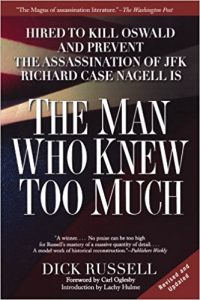 On September 20, 1963, two months before President John F. Kennedy was gunned down in Dallas, a highly decorated Army veteran named Richard Case Nagell walked into a bank in El Paso, fired two shots into a wall from a revolver, and went outside to await arrest. There was speculation, even by the officer who put him in handcuffs, that for some reason he wanted to be locked up.
On September 20, 1963, two months before President John F. Kennedy was gunned down in Dallas, a highly decorated Army veteran named Richard Case Nagell walked into a bank in El Paso, fired two shots into a wall from a revolver, and went outside to await arrest. There was speculation, even by the officer who put him in handcuffs, that for some reason he wanted to be locked up.
Nagell was charged with attempted bank robbery. Only later would he indicate to the FBI that he feared being implicated in an “inimical act” — one that involved accused JFK assassin Lee Harvey Oswald.
What could be known of Nagell’s strange saga was featured in my book on the Kennedy assassination, The Man Who Knew Too Much. Now recent releases from the National Archives of long-withheld CIA and FBI assassination-related files shed new light on Nagell, and on which branches of the CIA had the strongest interest in him.
Jan. 1
 The Intercept, Wilderness of Mirrors, Jefferson Morley (shown at right and the author of a new book, The Ghost, a biography of James J. Angleton), Jan. 1, 2018. Documents Reveal the Complex Legacy of James J. Angleton, CIA Counterintelligence Chief and Godfather of Mass Surveillance.
The Intercept, Wilderness of Mirrors, Jefferson Morley (shown at right and the author of a new book, The Ghost, a biography of James J. Angleton), Jan. 1, 2018. Documents Reveal the Complex Legacy of James J. Angleton, CIA Counterintelligence Chief and Godfather of Mass Surveillance.
Veteran CIA officer Cleveland Cram was nearing the end of his career in 1978, when his superiors in the agency’s directorate of operations handed him a sensitive assignment: Write a history of the agency’s Counterintelligence Staff. Cram, then 61, was well qualified for the task. He had a master’s and Ph.D. in European History from Harvard. He had served two decades in the clandestine service, including nine years as deputy chief of the CIA’s station in London.

 Cram was assigned to investigate a debacle. The Counterintelligence Staff, created in 1954, had been headed for 20 years by James Jesus Angleton, a legendary spy who deployed the techniques of literary criticism learned at Yale to find deep patterns and hidden meanings in the records of KGB operations against the West. But Angleton was also a dogmatic and conspiratorial operator whose idiosyncratic theories paralyzed the agency’s operations against the Soviet Union at the height of the Cold War, and whose domestic surveillance operations targeting American dissidents had discredited the CIA in the court of public opinion.
Cram was assigned to investigate a debacle. The Counterintelligence Staff, created in 1954, had been headed for 20 years by James Jesus Angleton, a legendary spy who deployed the techniques of literary criticism learned at Yale to find deep patterns and hidden meanings in the records of KGB operations against the West. But Angleton was also a dogmatic and conspiratorial operator whose idiosyncratic theories paralyzed the agency’s operations against the Soviet Union at the height of the Cold War, and whose domestic surveillance operations targeting American dissidents had discredited the CIA in the court of public opinion.
Cram’s mission — and he chose to accept it — was to soberly answer the questions that senior CIA officials were asking in their private moments: What in the name of God and national security had Jim Angleton been doing when he ran the Counterintelligence Staff from 1954 to 1974? Did his operations serve the agency’s mission? Did they serve the country?
More…



